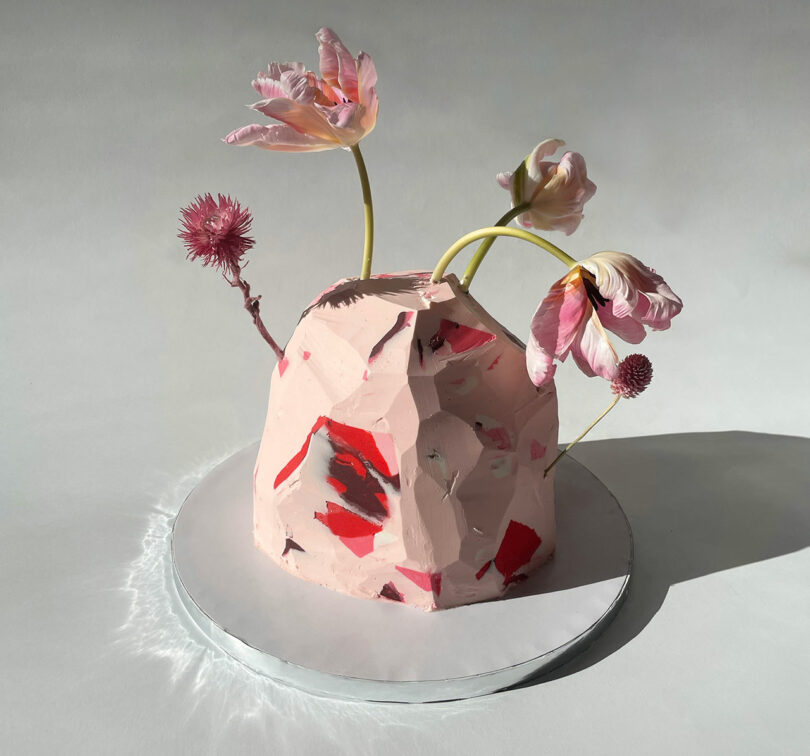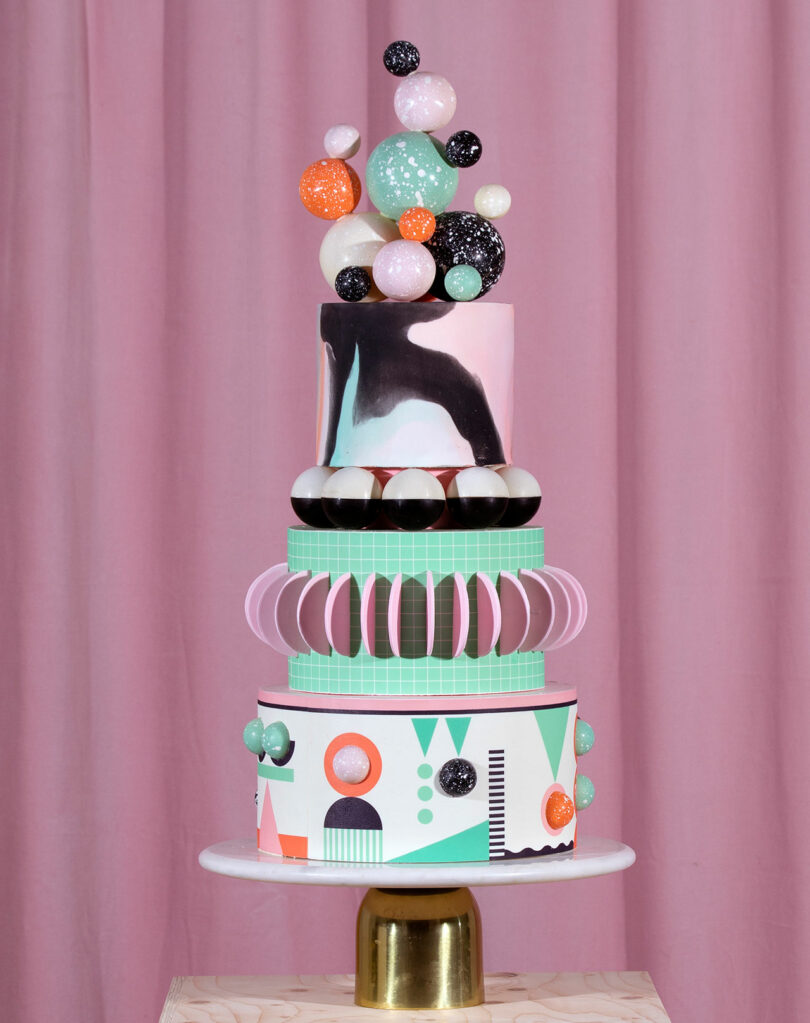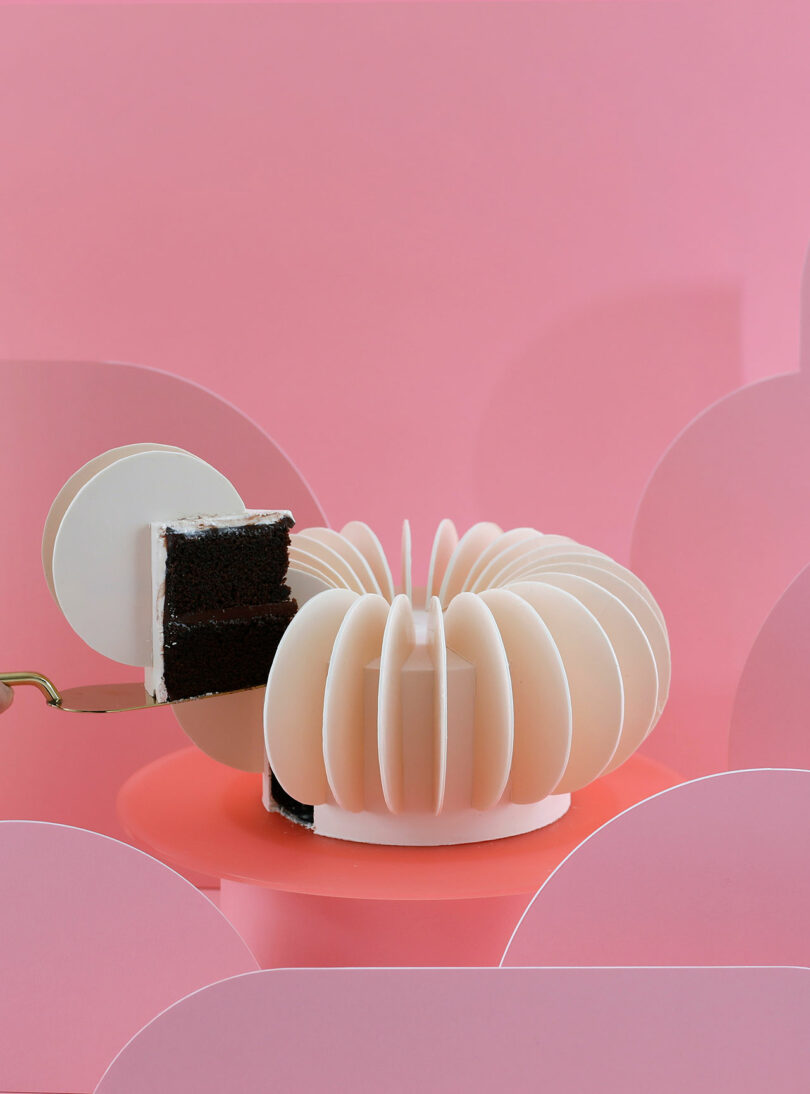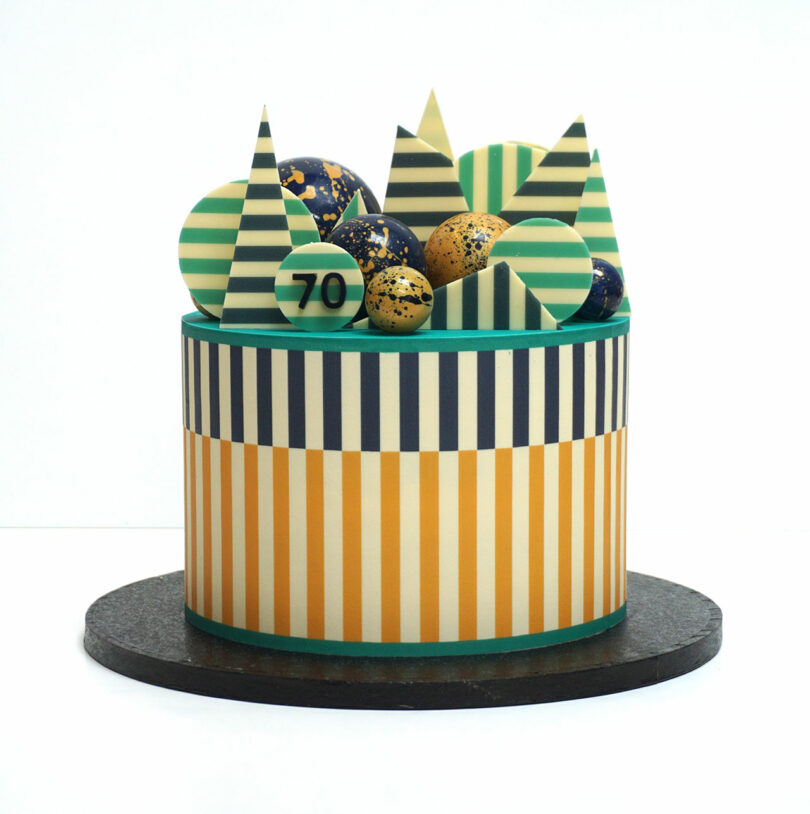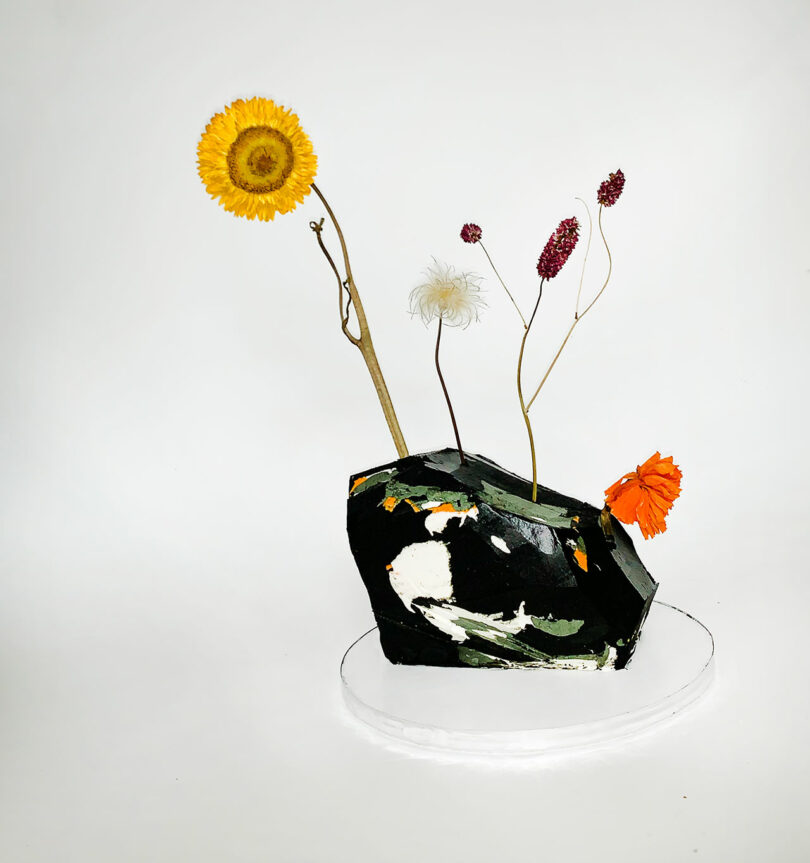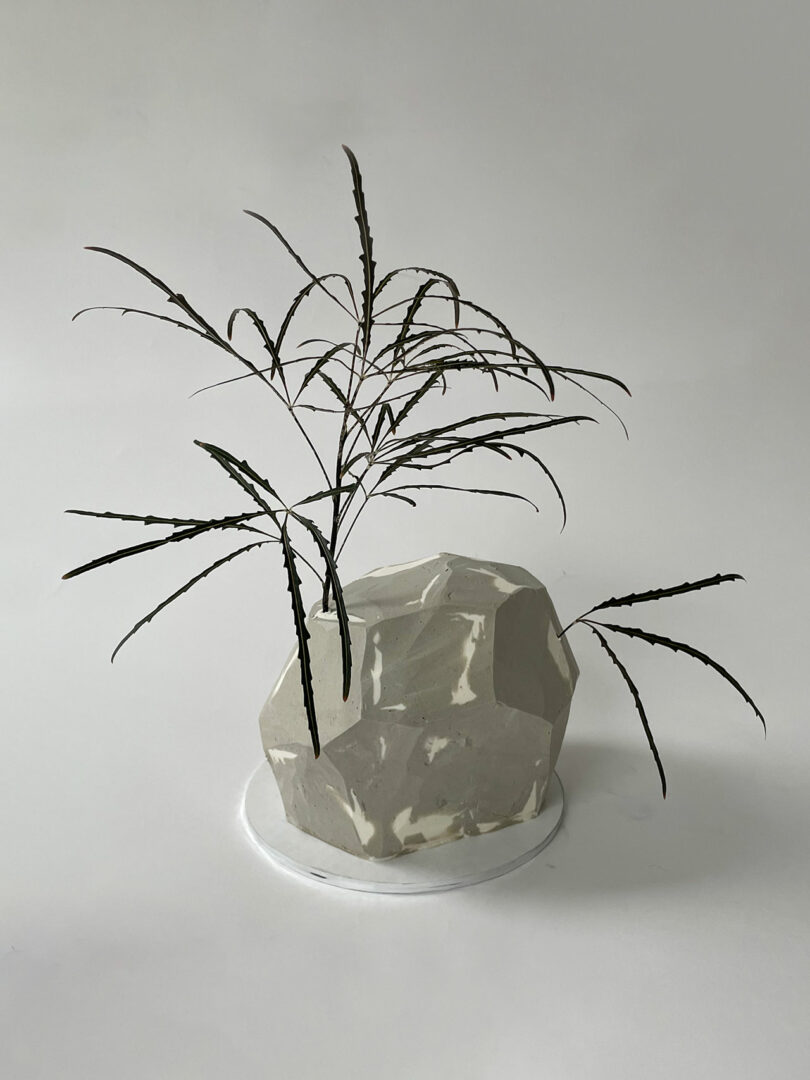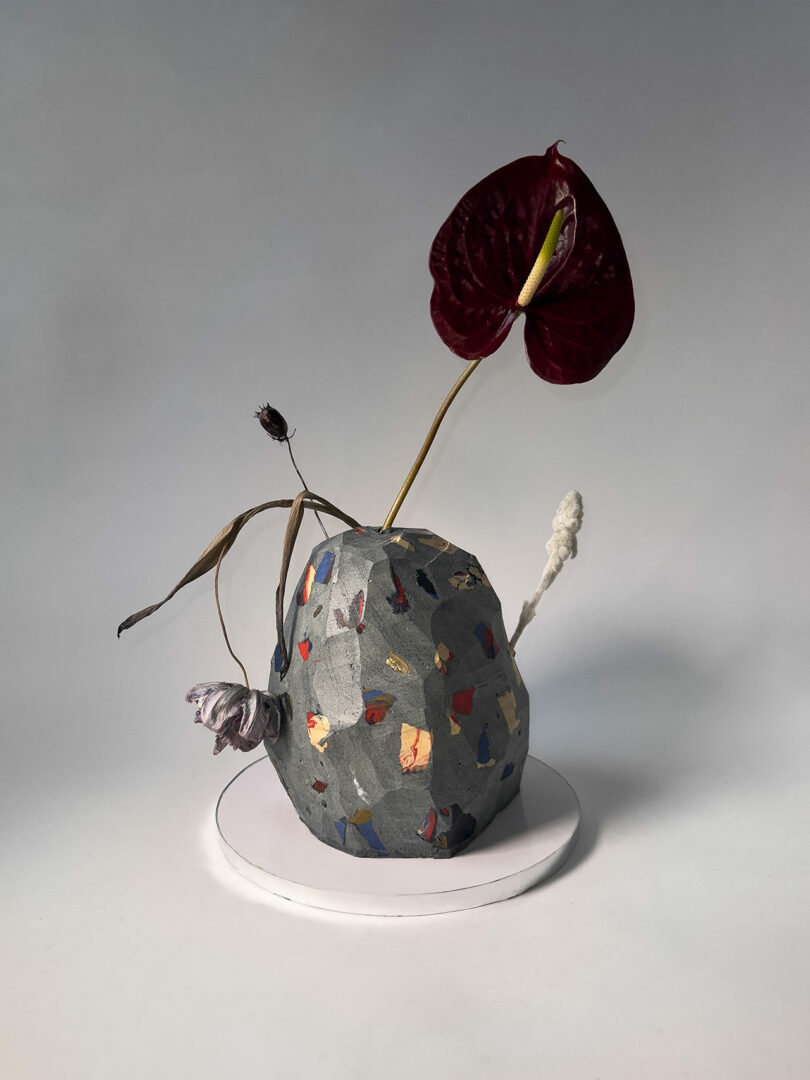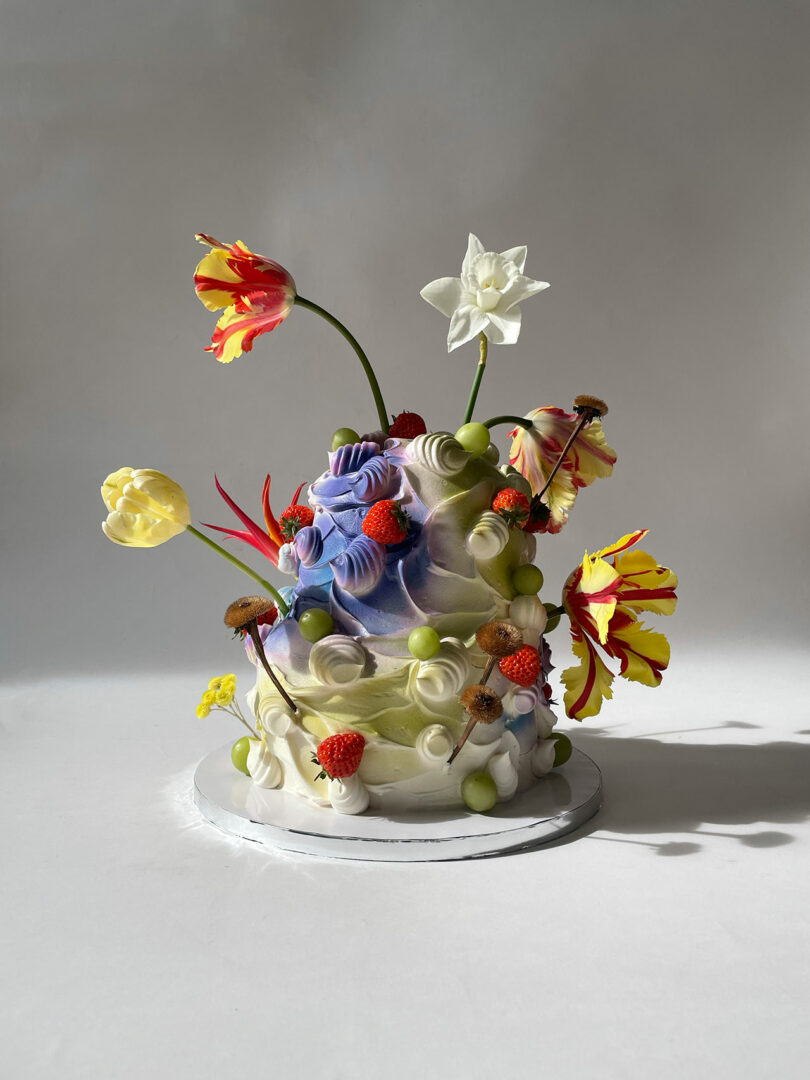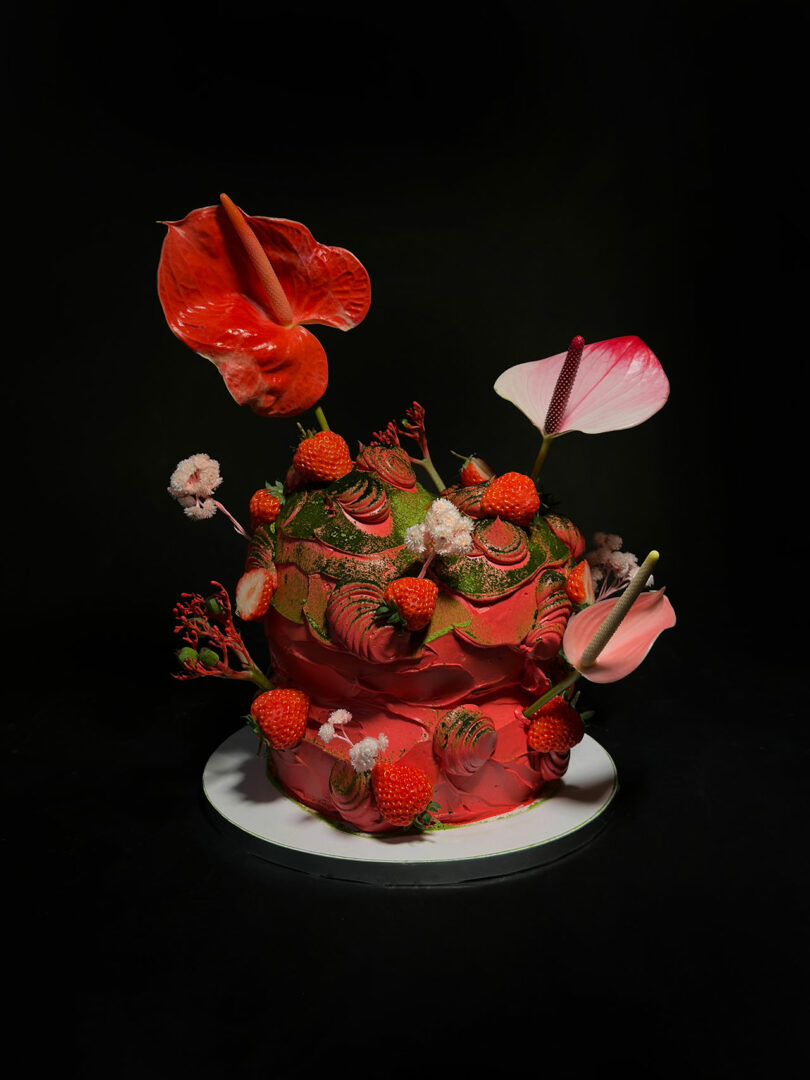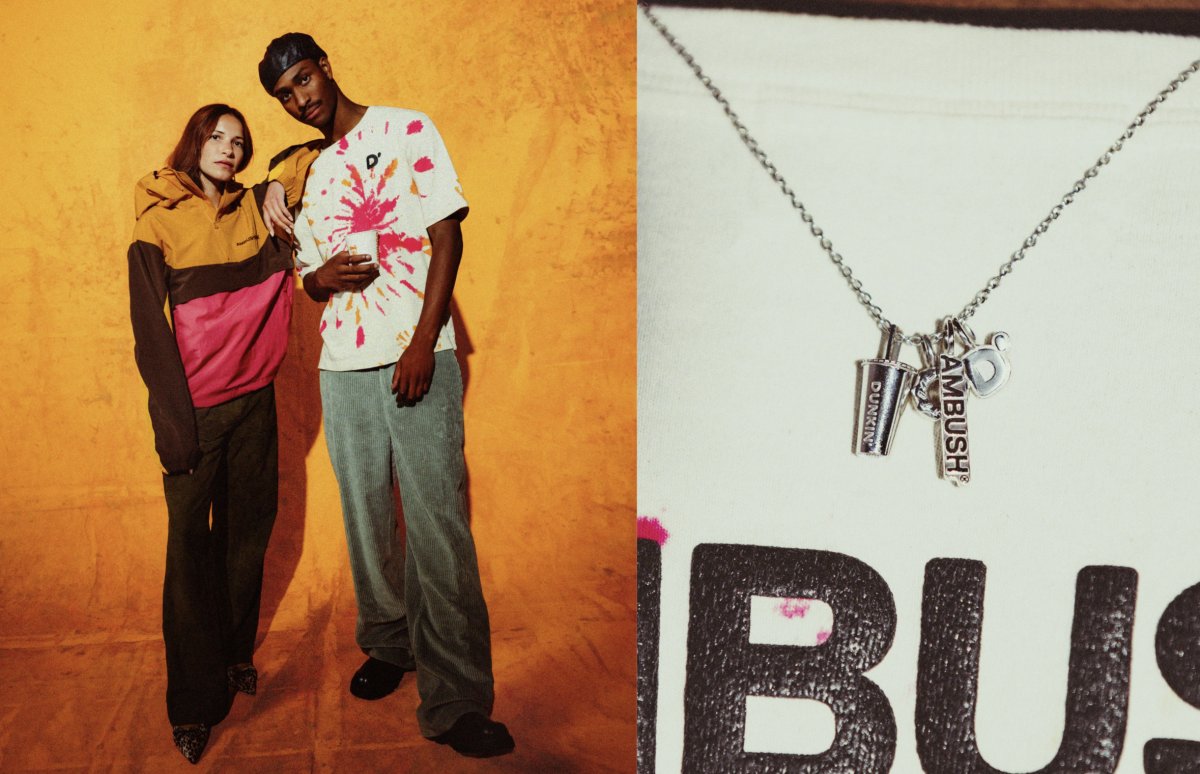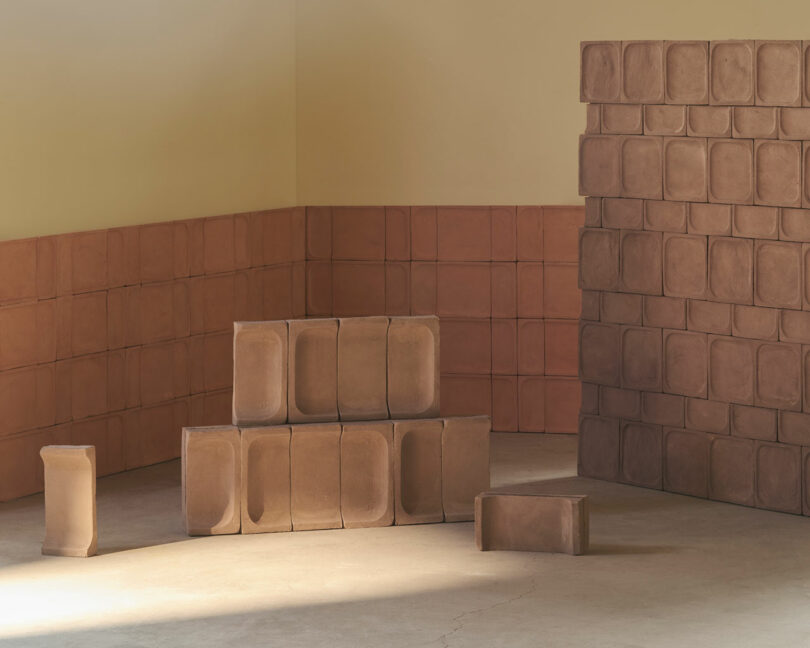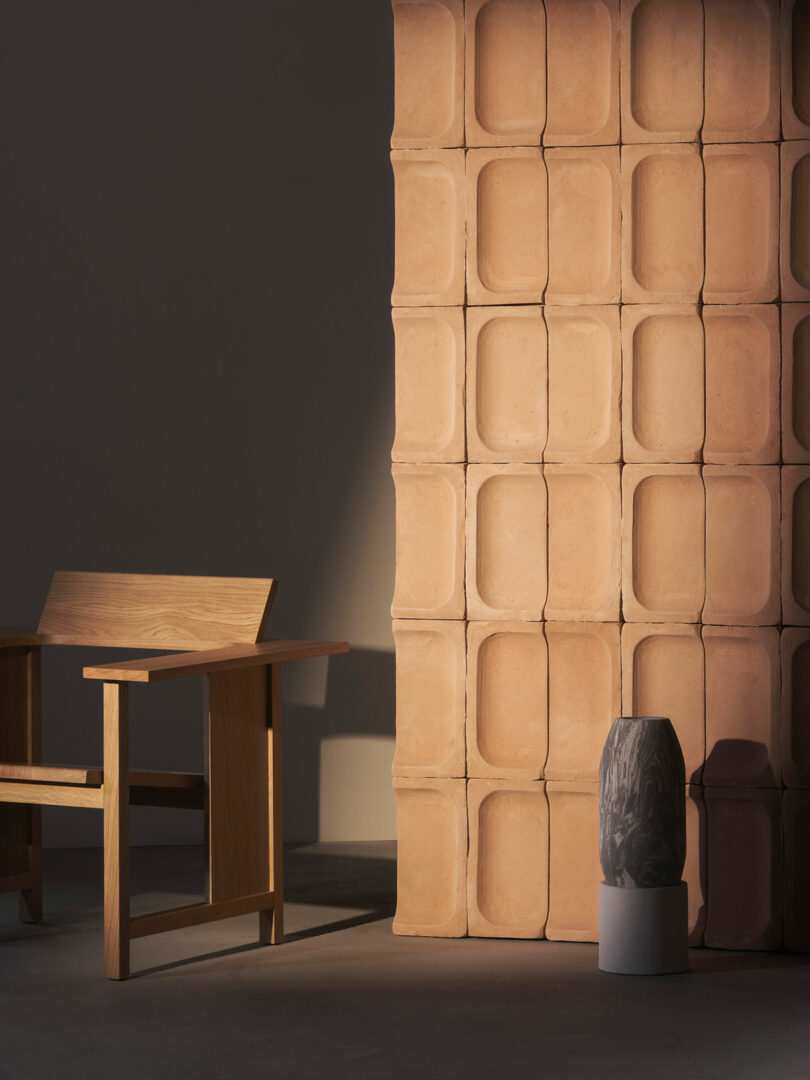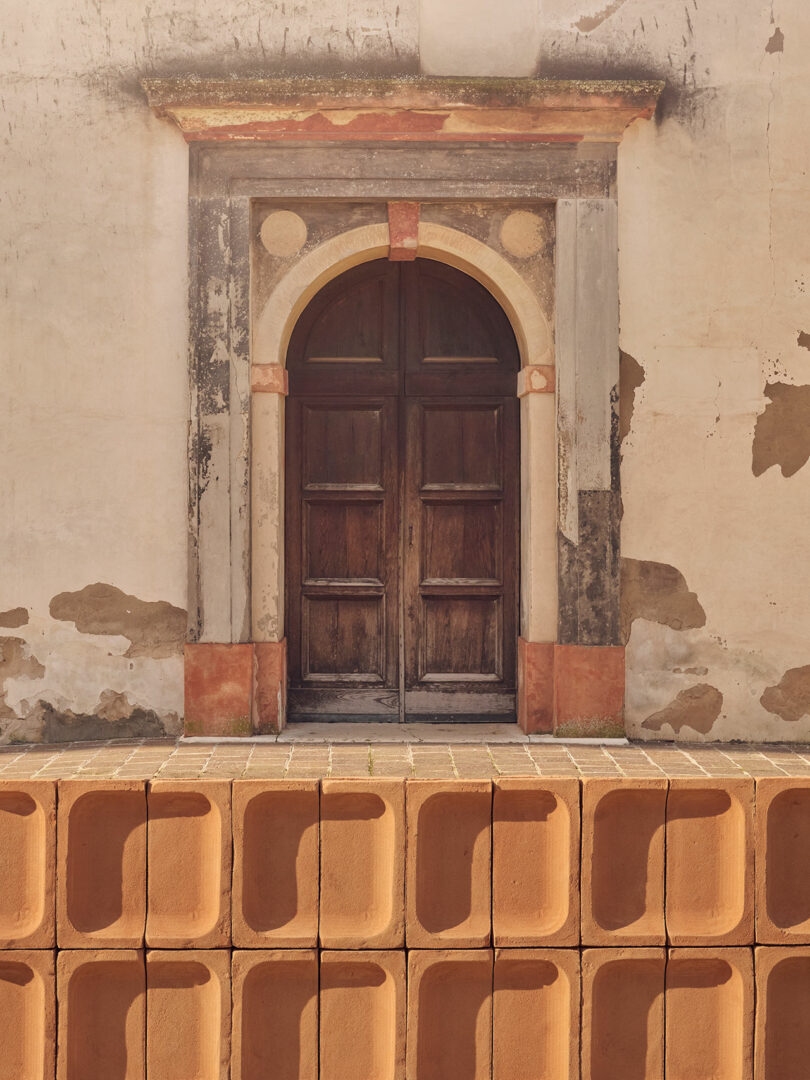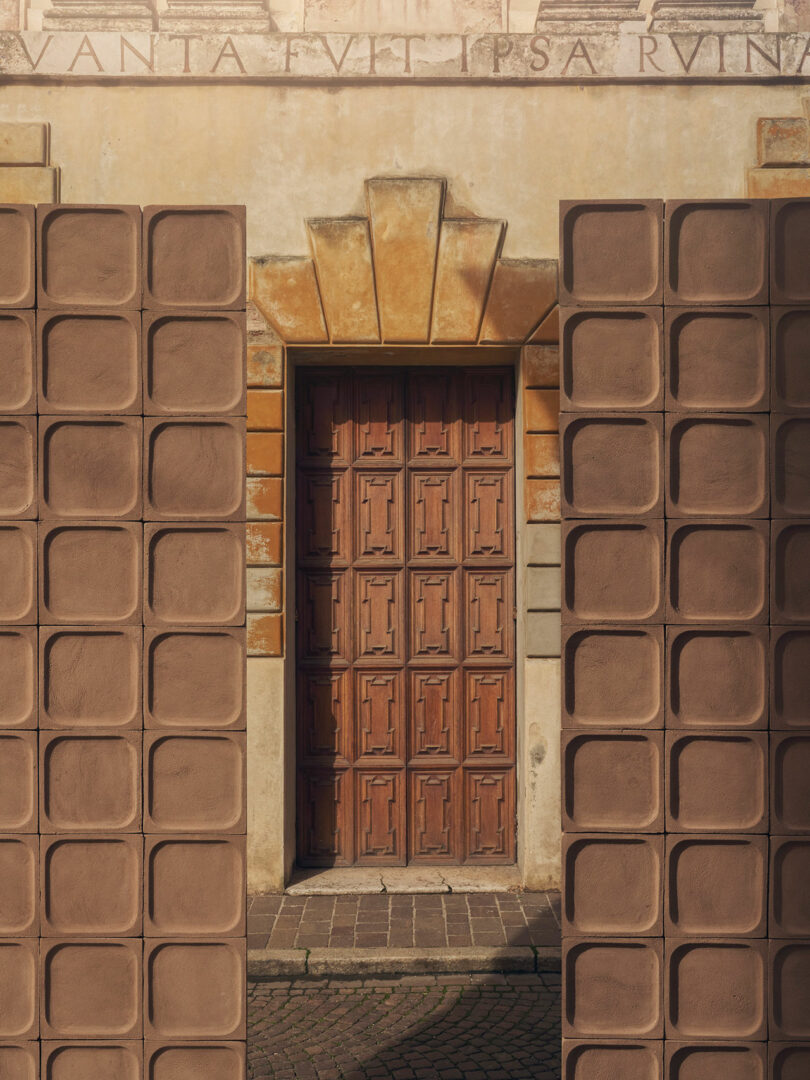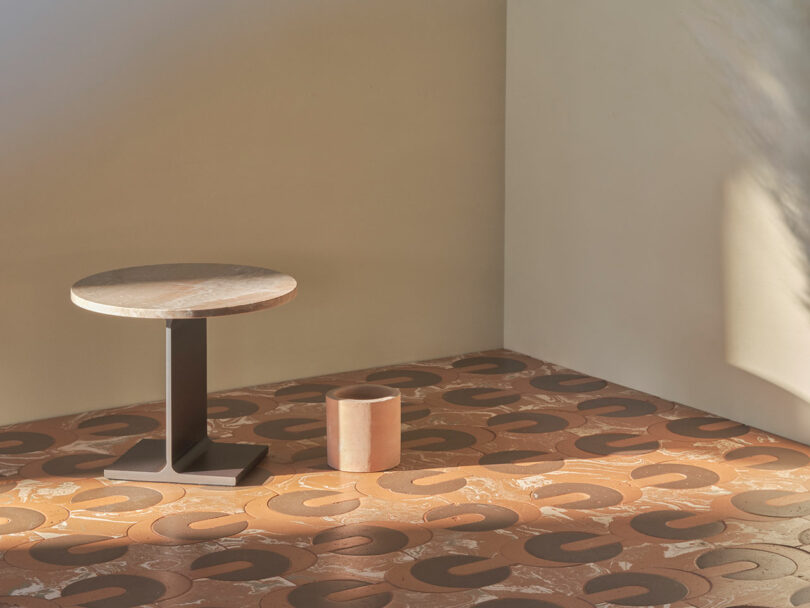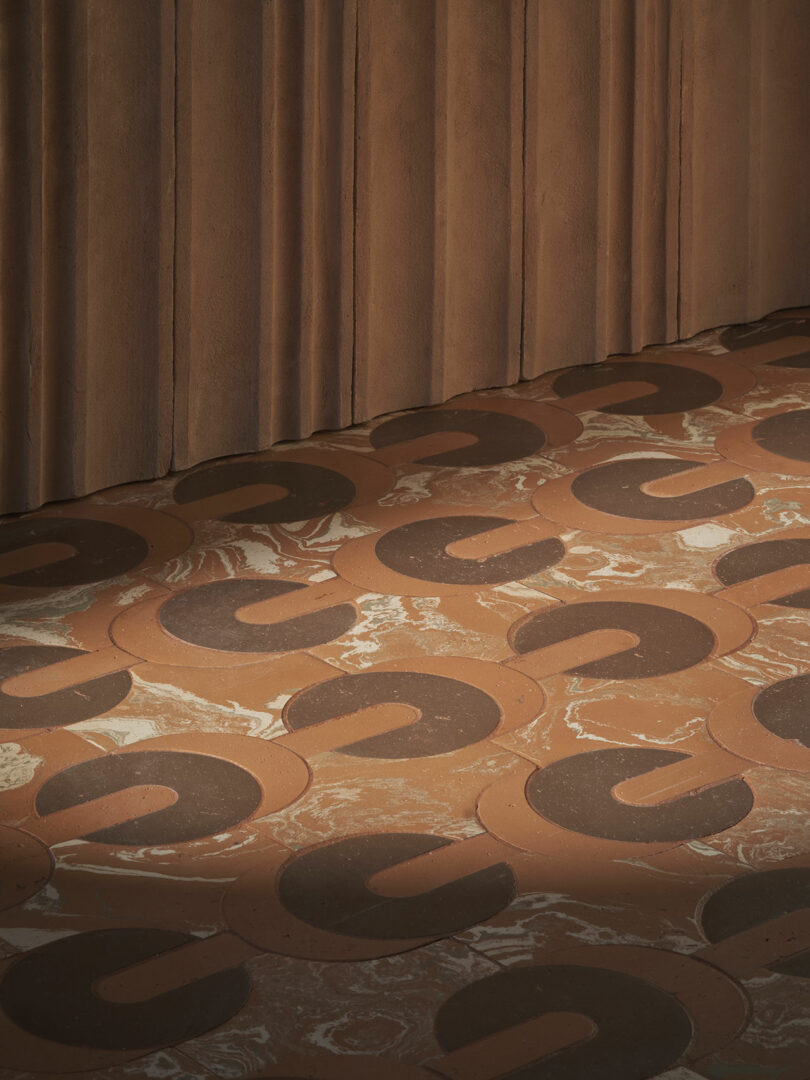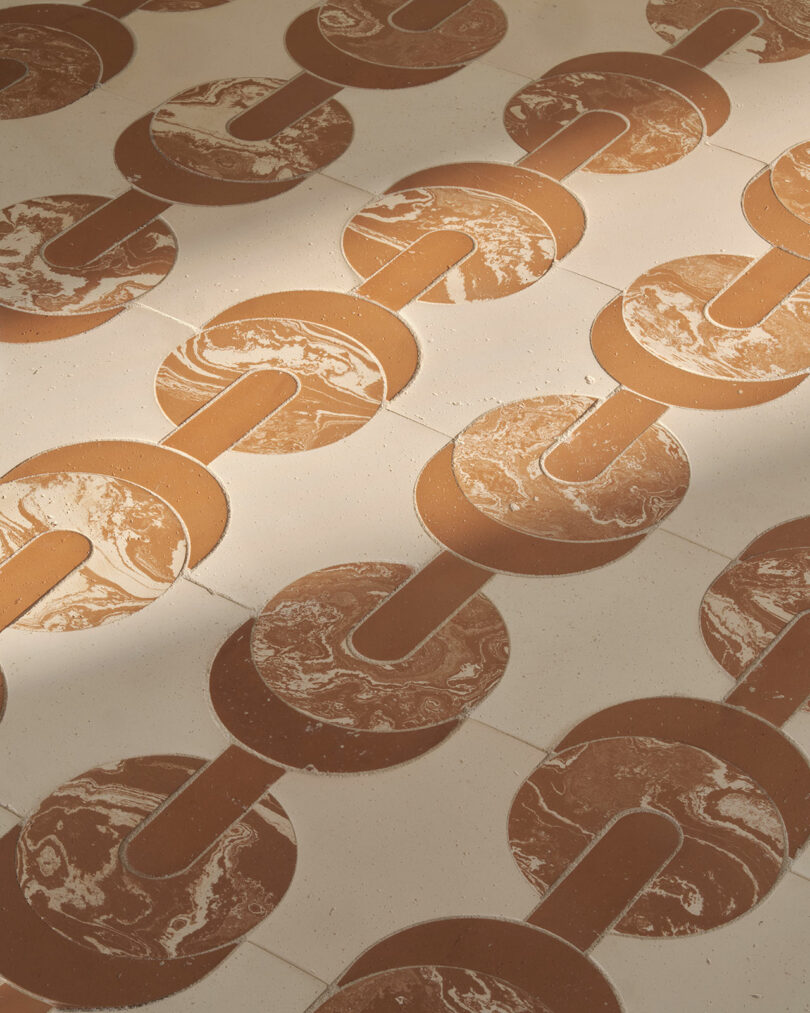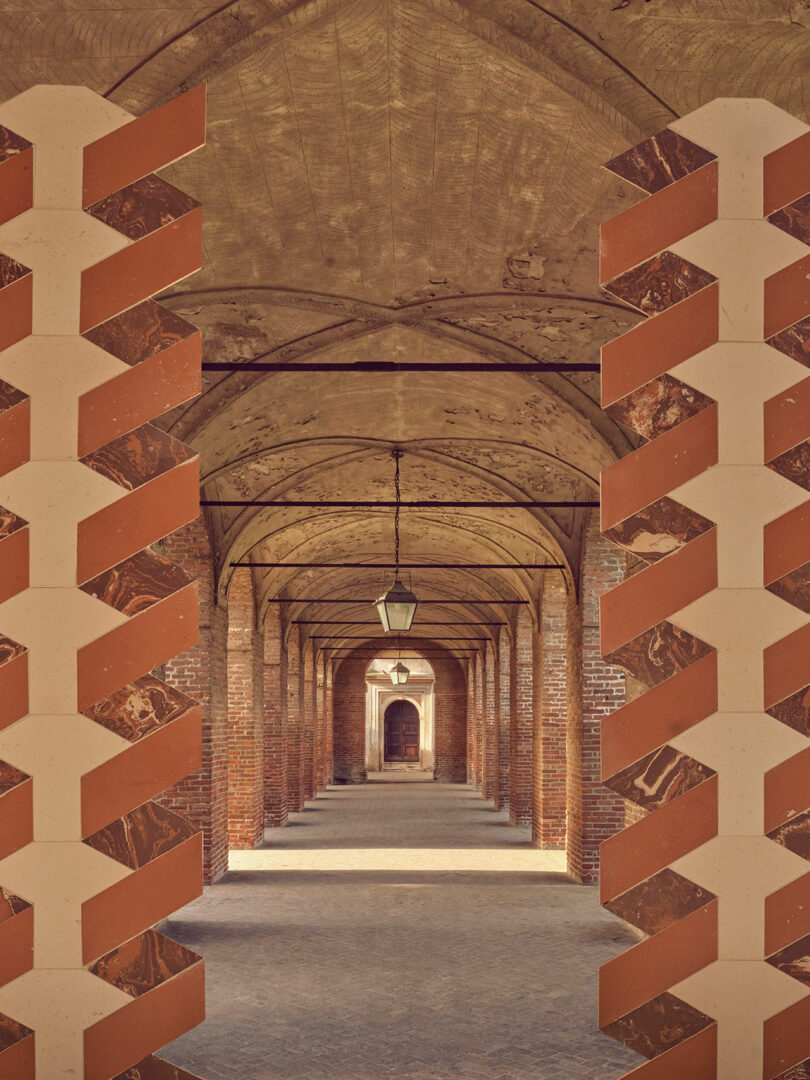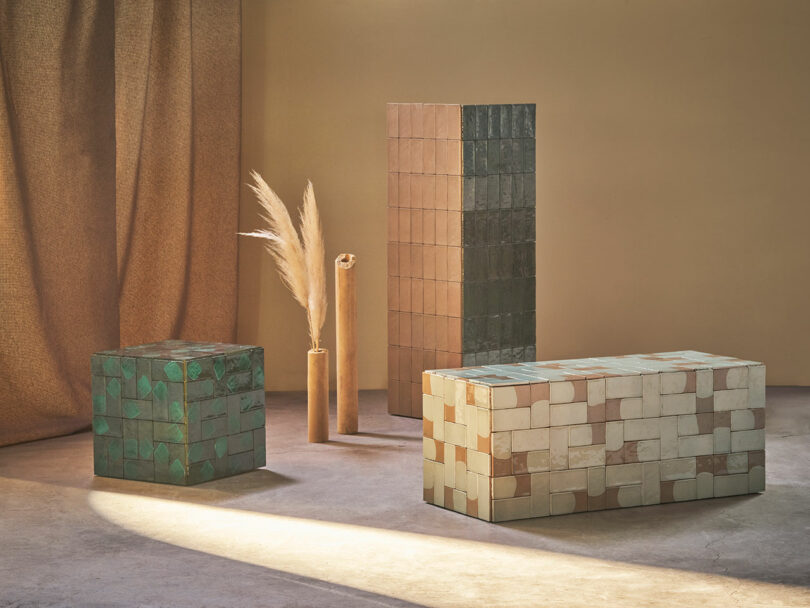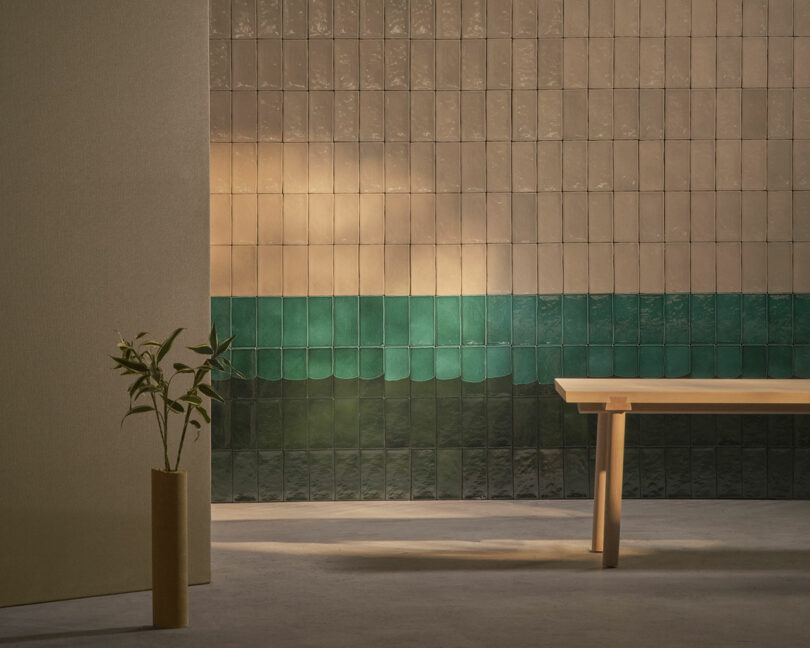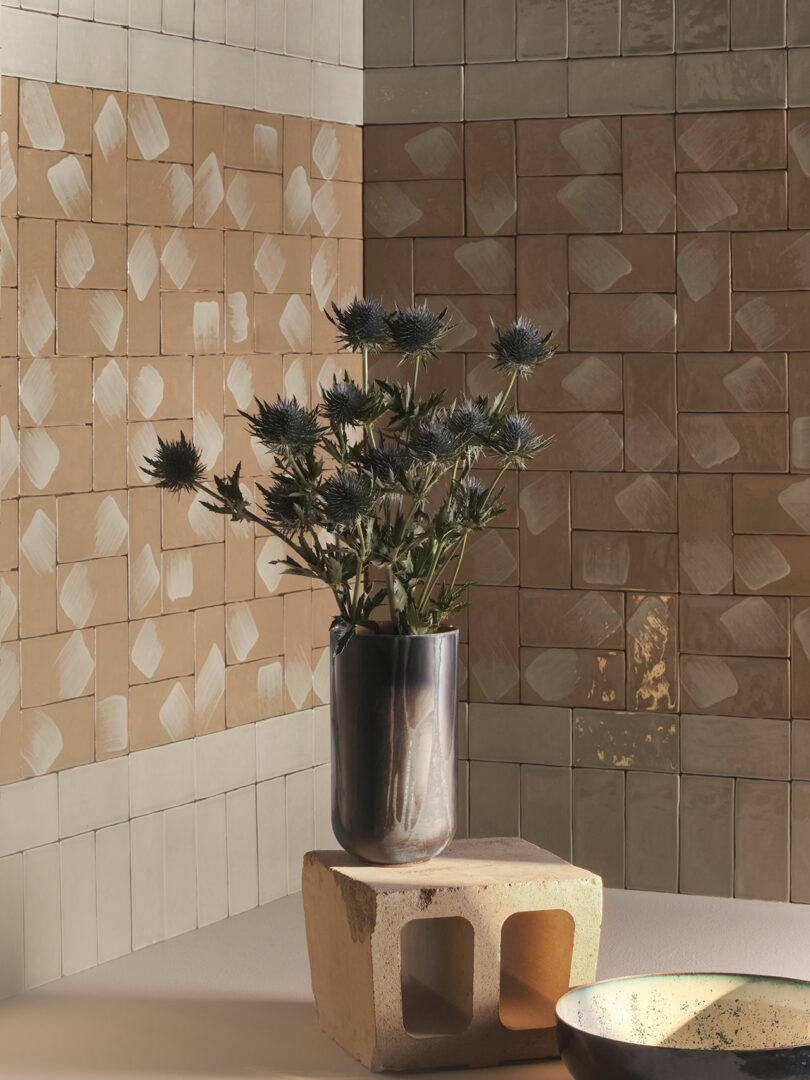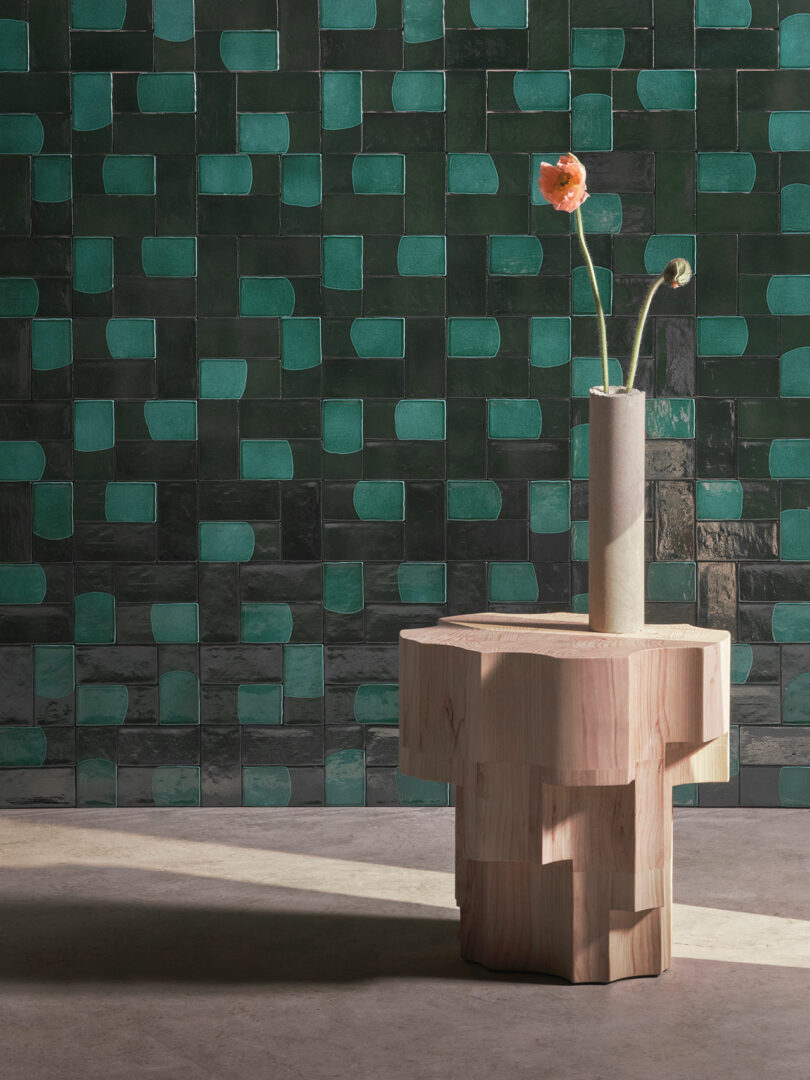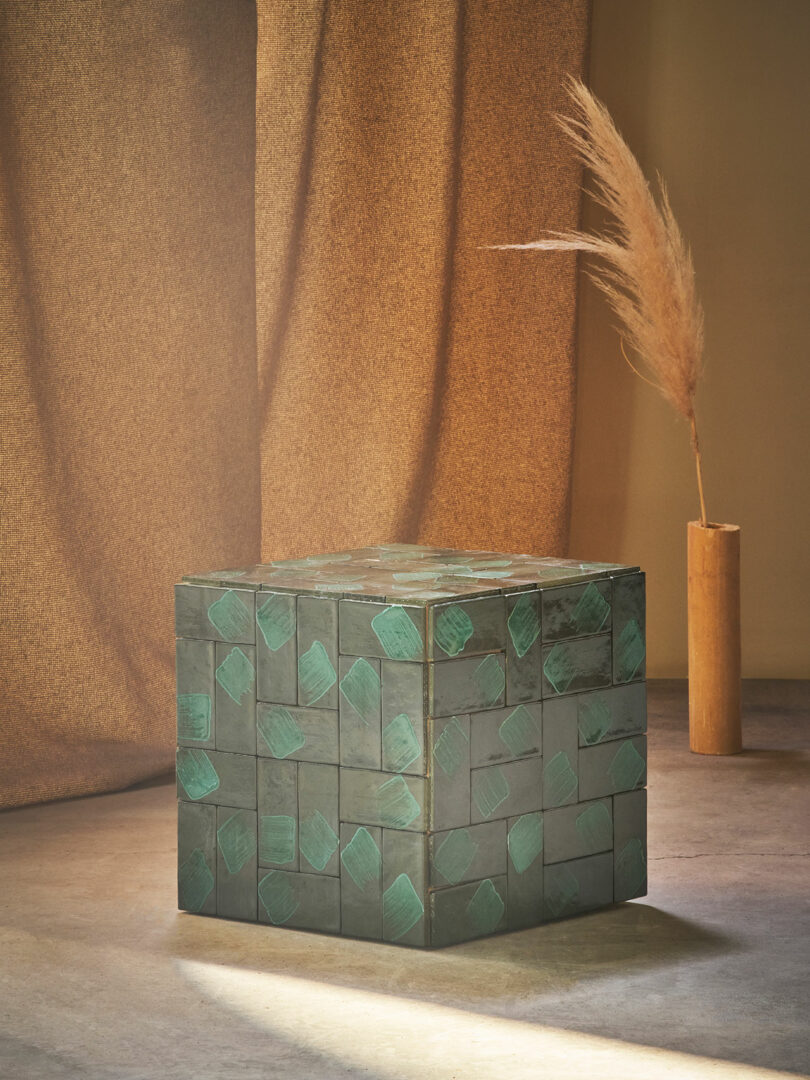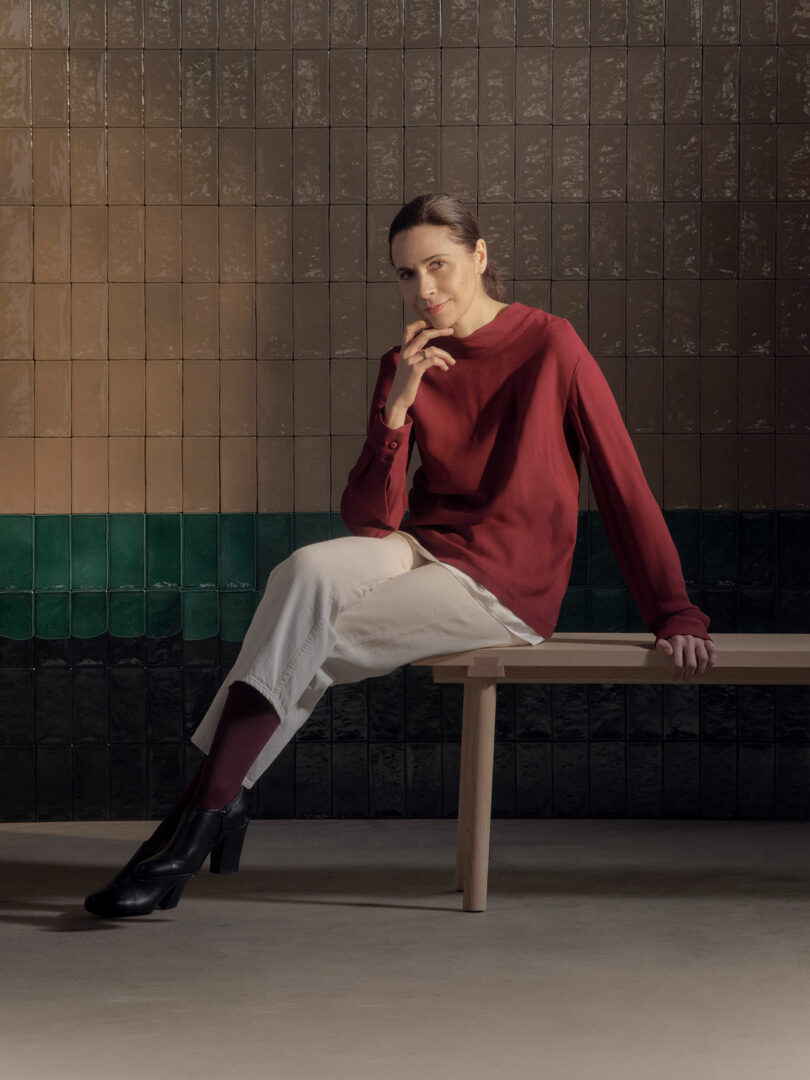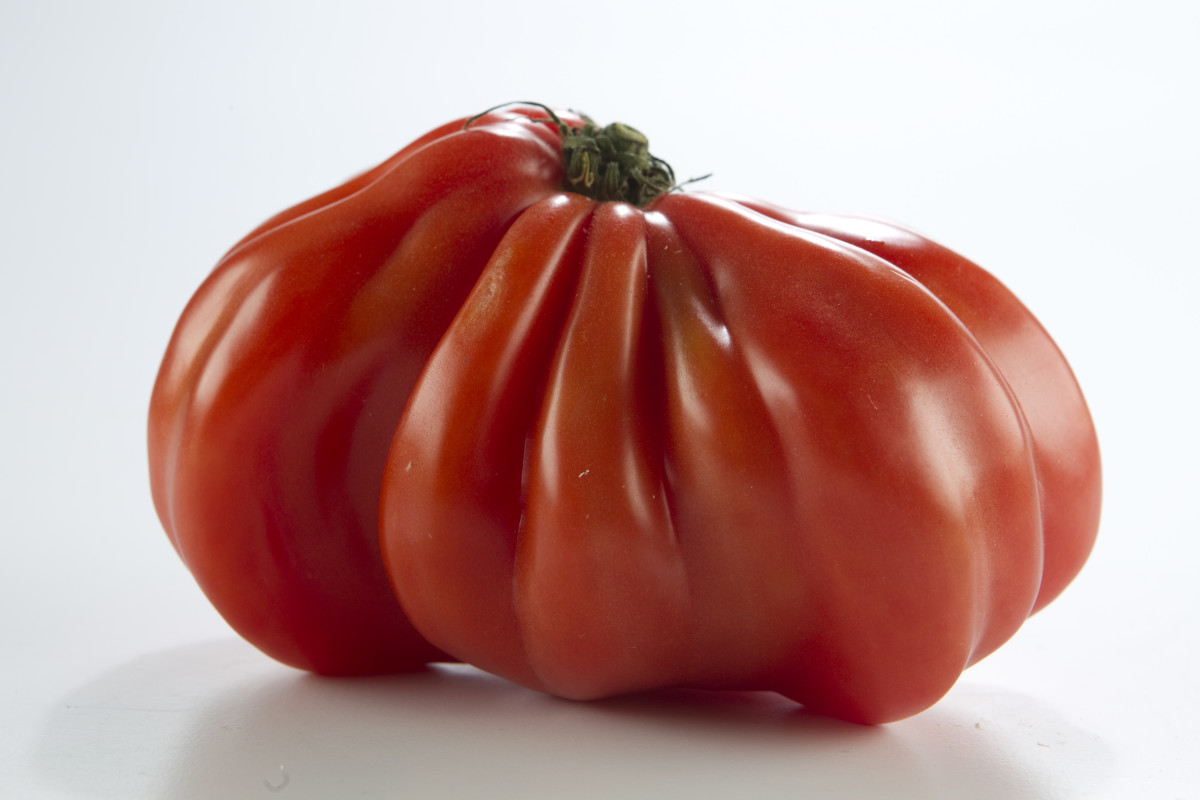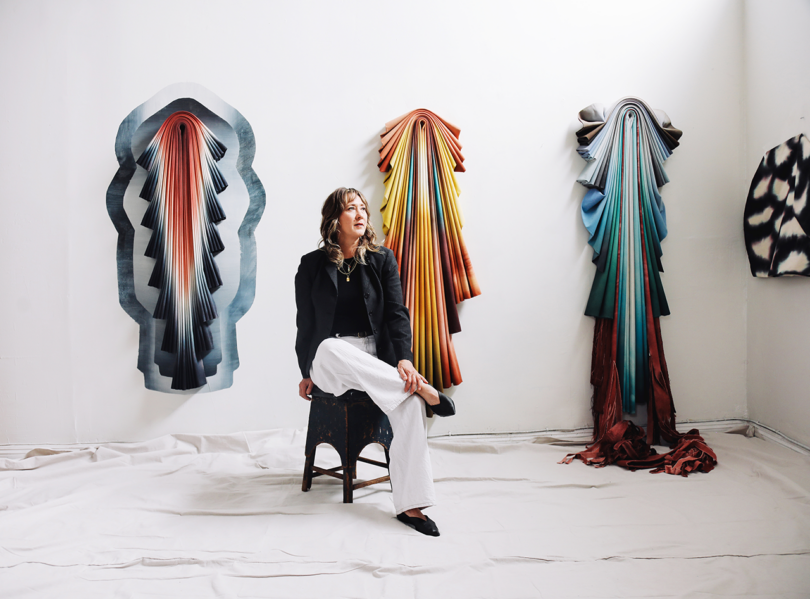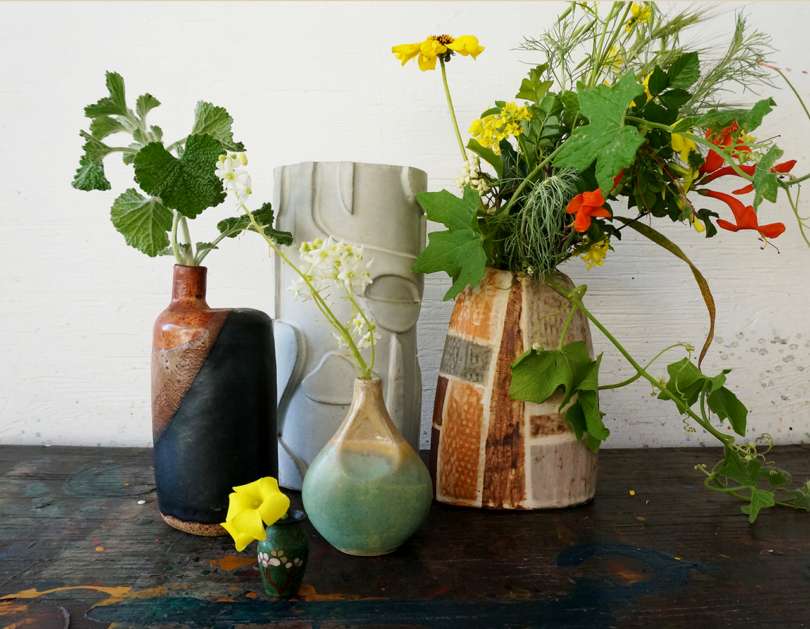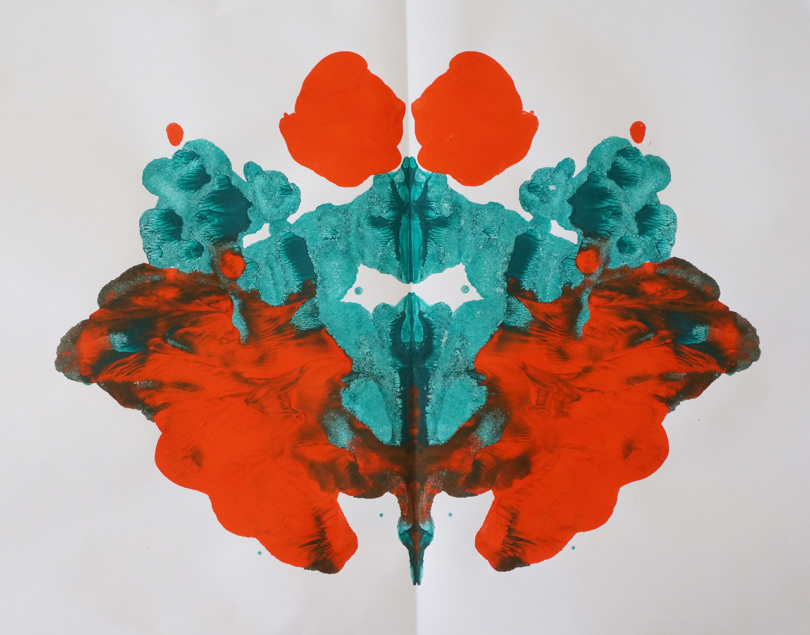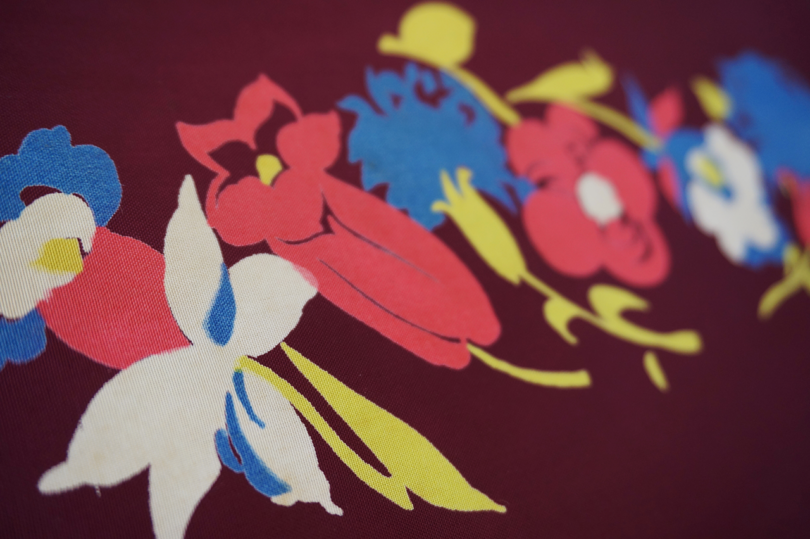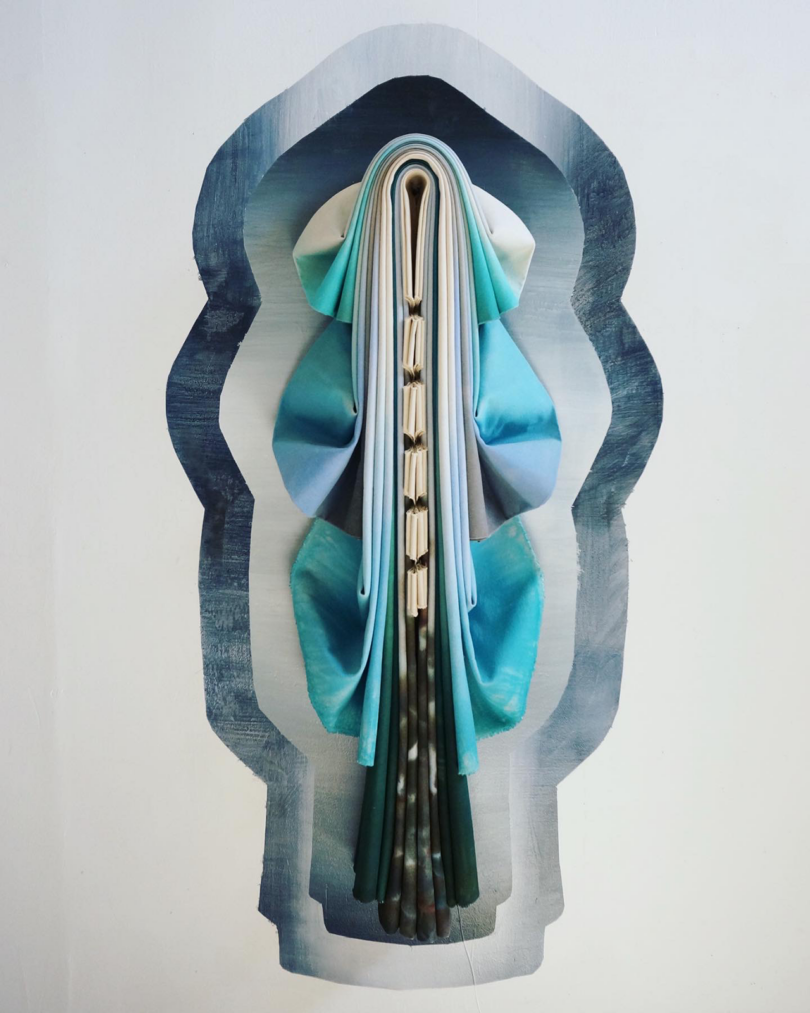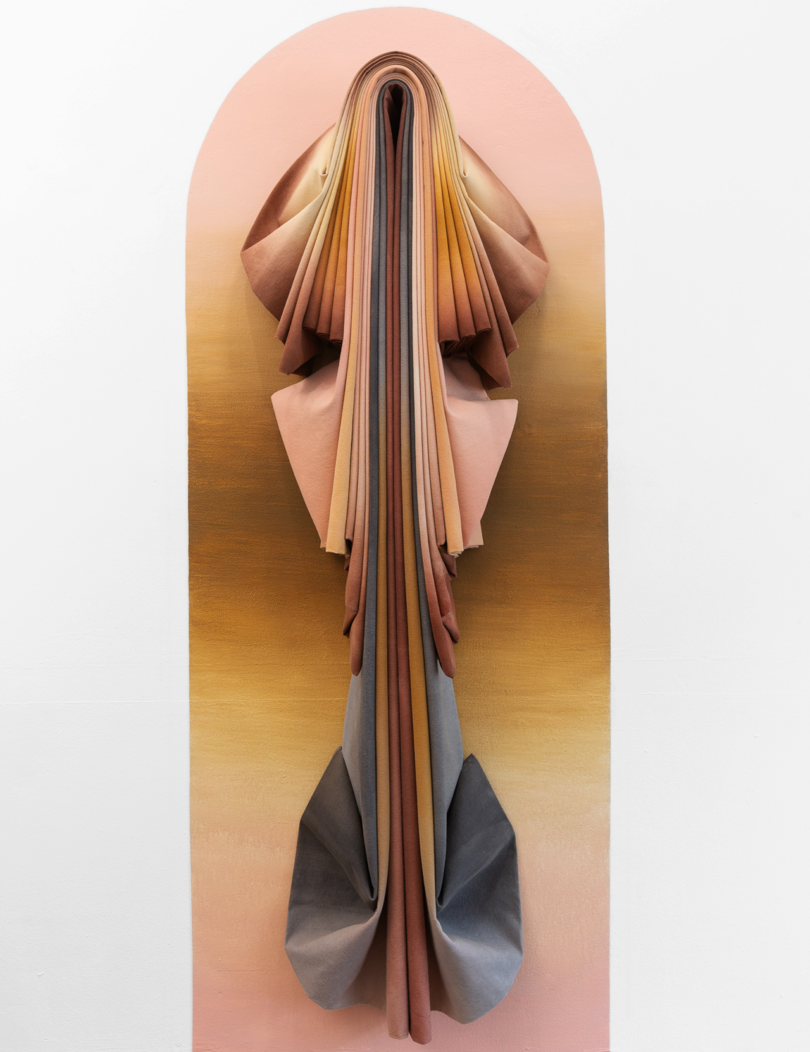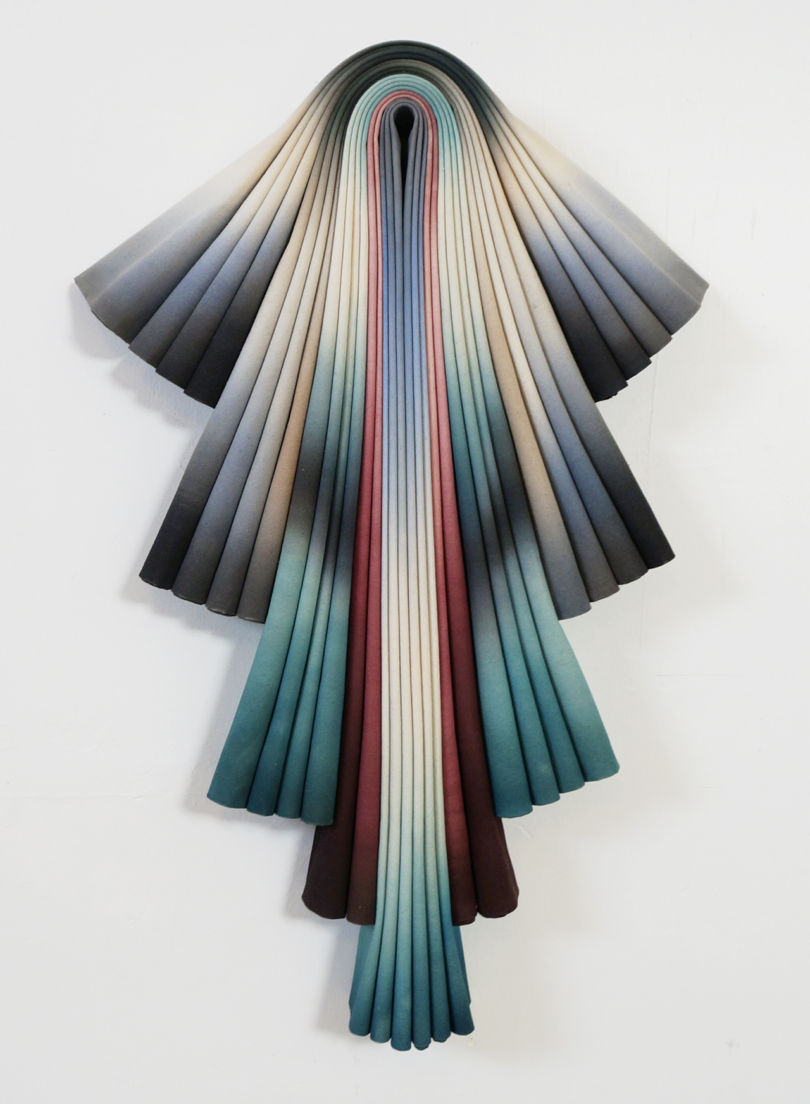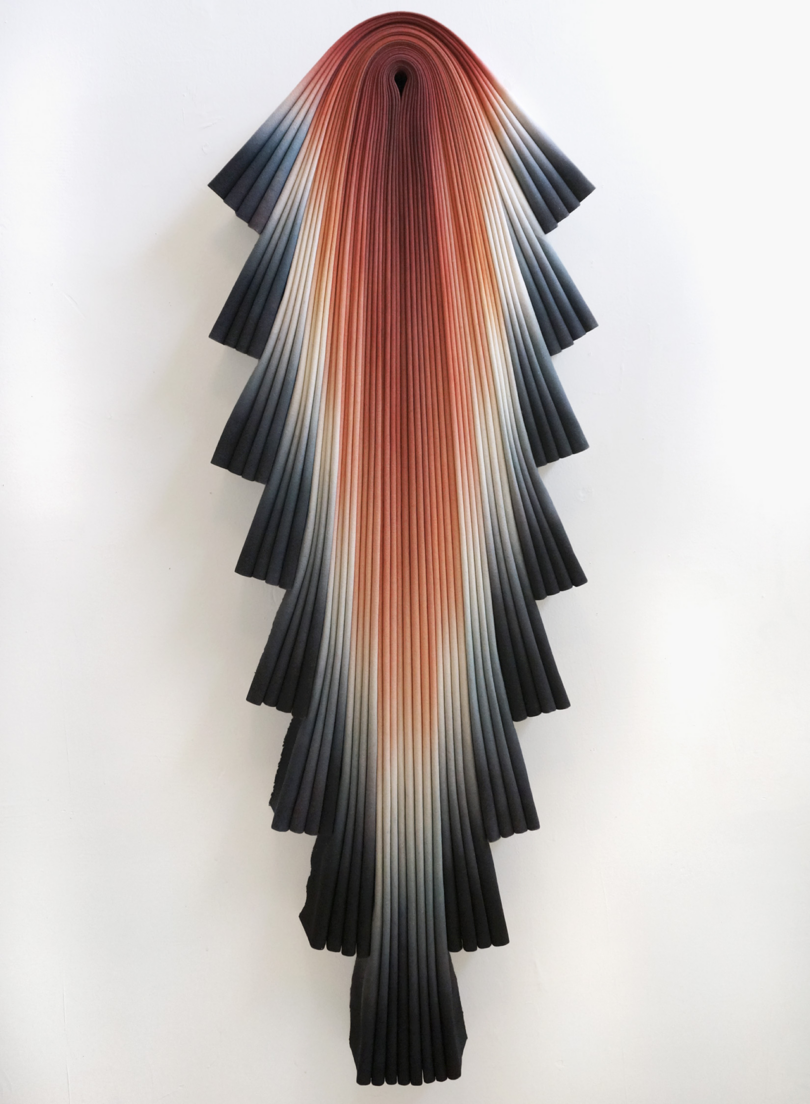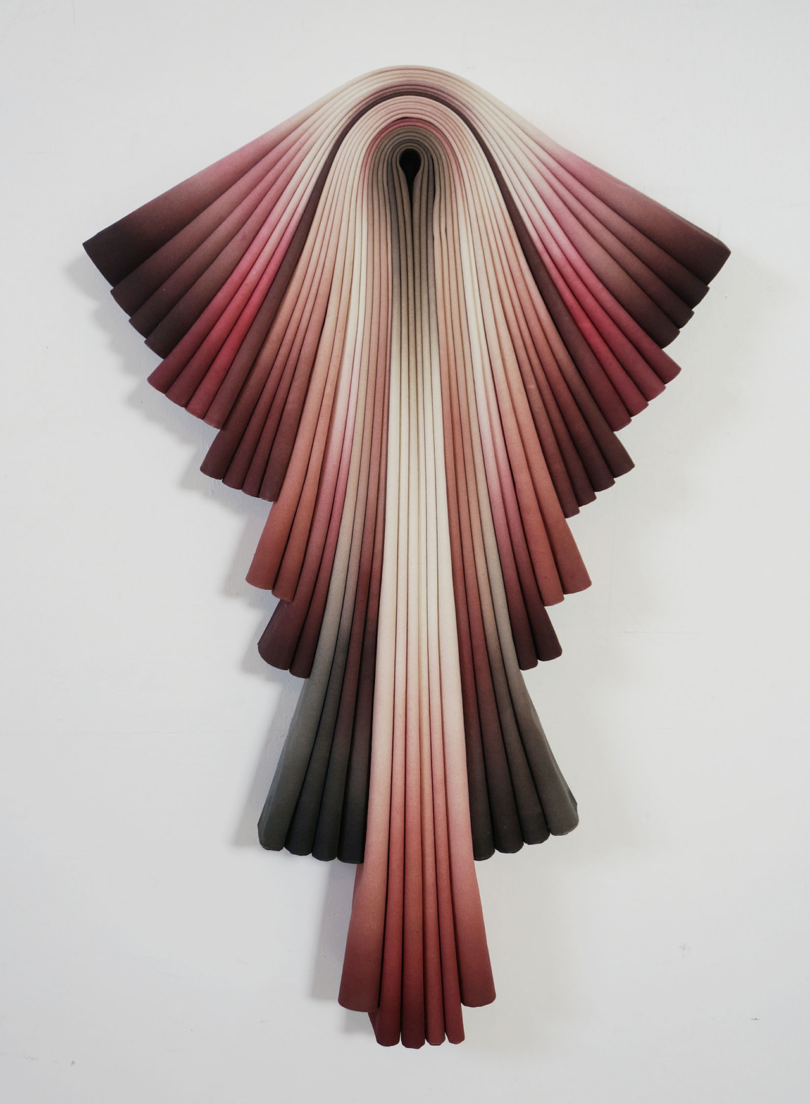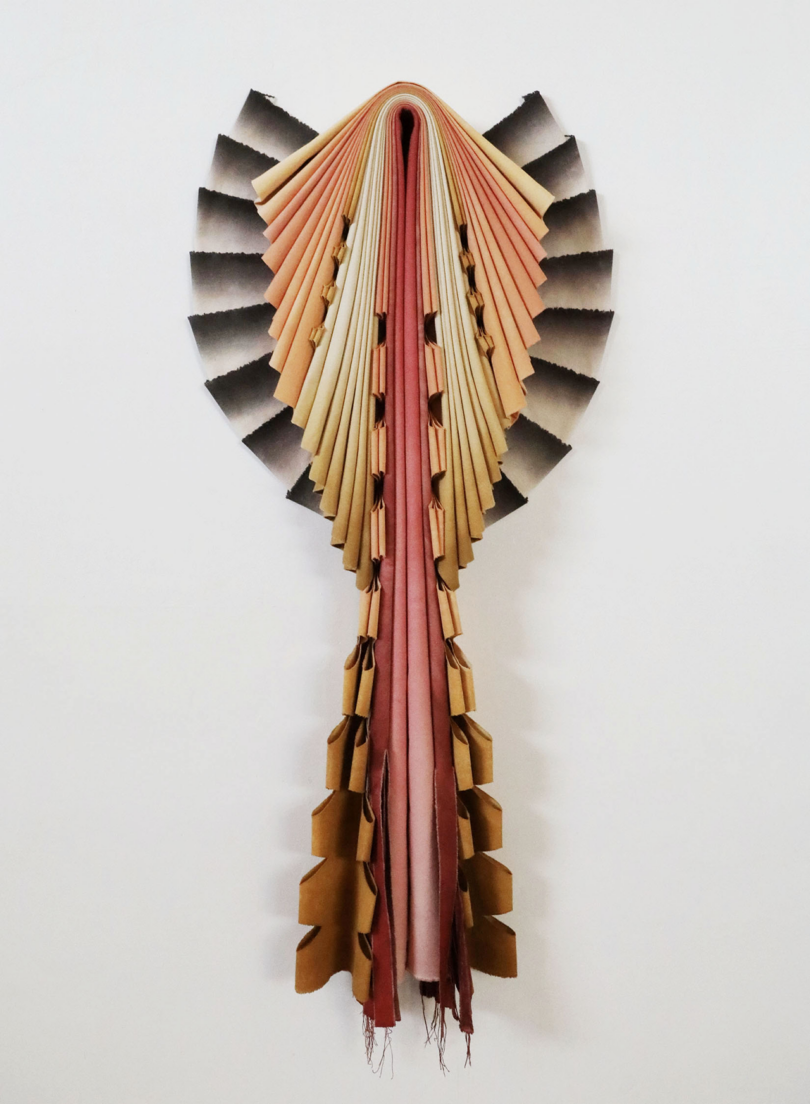Shared posts
Erin McKean goes down a rabbit hole of WWII resistance diaries, “dipping...
That Evil Booty Hole Won’t Banish Itself

Earlier this week, I shared that medieval woodcut I love sharing periodically, the one where a woman is steadfastly avoiding the devil’s attempts to show her his booty hole. With the reminder that “there will be days that the devil’s gonna try and show you his butthole every chance he gets but friends, the secret is you don’t have to look.” It was meant to be gentle wisdom about protecting your peace, about not torturing yourself with election numbers.
Now, that wisdom feels hollow in my throat.
Today, what’s crushing isn’t just the devil’s same old routine – it’s watching so many Americans eagerly lining up for front-row seats to the show again, crawling right back up that hellish poopshoot even when it works against their own interests. The choreography hasn’t changed, and neither, it seems, has their appetite for it.
I’ve been staring at this blank page for hours, deleting and rewriting, trying to find words that don’t feel inadequate. Maybe that’s the point – maybe there aren’t “right” words for moments like these. Maybe all I can offer is my raw truth: I am angry. I am heartbroken. I am sitting here with fury choking my throat and tears clouding my vision because, once again, we’re watching basic human dignity being treated as debatable.
To my friends who are trans, who are queer, who are Black and brown, who are immigrants, who are disabled, who are existing every day in a world that keeps trying to legislate you out of being: I see you. I love you. I am holding space for your rage and your grief and your exhaustion. Your humanity is not up for debate. Your right to exist is not a political issue. Your lives matter infinitely more than my comfort in speaking up.
I keep thinking about how we’re all just trying to be human in a world that seems hellbent on grinding down our edges until we fit into smaller and smaller boxes. The exhaustion feels physical – a weight pressing down on my chest, making it hard to breathe. I’m cycling through waves of rage and despair and a bone-deep weariness that comes from watching the same patterns play out again and again.
I am so disgusted, so disappointed right now that I don’t even know what to do with these feelings. It would be so easy to sink into this muck of despair, to let it swallow me whole. But even in this darkness, I see you all still shining. Still creating. Still making beauty and joy and community in the face of everything. You remind me that resistance doesn’t always look like grand gestures. Sometimes it looks like surviving. Sometimes it looks like joy. Sometimes it looks like loving each other so fiercely that it becomes its own kind of revolution.
I don’t have answers. I won’t pretend to have wisdom to offer. What I do have is my voice, my vote, my resources, and my promise to keep showing up. To keep listening. To keep learning. To keep doing the work.
Because the devil and his butthole aren’t going to banish themselves. And we’ve got work to do. Right now. Today. This minute.
If you need me, I’m here. If you need to rage, I’m here. If you need to cry, I’m here. If you need resources or support, I’m here. We get through this together, or not at all.
In my doom-scrolling over the past 24 hours, I’m seeing it all – yes, people threatening to leave the country and berating their friends and family members for voting with hate and fear in their hearts. I’m seeing the wishy-washy “we can still be friends no matter how you voted, show some compassion and empathy” posts, as if basic human rights were just a difference of opinion. But I’m also seeing people rallying, sharing resources, posting actionable items, building networks of support. And then I came across these words from Tyler Thrasher that struck me right in the chest: “nothing changes [in how we engage and show up for each other.] We continue to love. To foster community. To advocate for those in need and most importantly protect our peace.”
I know these movements, these sentiments aren’t new. Not after disappointment in 2016, not before that, not now. I’m clear-eyed enough to know things aren’t going to fundamentally change in our lifetime, or our children’s, or even our grandchildren’s. This is long work. Ancient work.
And so we keep going. Because in all this darkness, I see you persisting, nurturing each other, holding space for tenderness even now…. and somehow, in between the tears and the rage, we’re all still imagining better worlds into being.
Even in expressing all this, I still worry all the time that I don’t have the correct language or the proper words for moments like this, that no matter what I say in moments like these, someone’s going to have a problem with it. But they’re going to have a problem with my silence, too. So you might as well speak what’s in your heart and mean it. What other choice do we have?
Willie Alexander’s Glitter And Hot Pink Abstractions
SarahI actually really like a bunch of these! Tastes change indeed
Friends and admirers crowded into Gloucester’s Jane Deering Gallery a few weeks back for the opening reception of Willie Alexander’s exhibition “Goya’s head found on Half Moon Beach,” which runs from Oct. 11 to Nov. 3, 2024.
Alexander, who’s a friend of ours, is best known as the Godfather of Boston Punk—now in his 80s and still crooning behind his keyboard in glam eyeliner and with a shock of white hair. Over the years he’s performed with The Lost, The Bagatelle, Grass Menagerie with Doug Yule, Nonie’s Blues, Radio Hearts, a zombie Velvet Underground with Yule (after Lou Reed, John Cale and Sterling Morrison had left the band), his namesake Willie Alexander and the Boom Boom Band, the Persistence of Memory Orchestra, Fish Eye Brothers, the Raztones, the Fishtones, solo projects, and so on.
But since Alexander was a kid, growing up the son of a Baptist preacher dad and piano-playing mom, in Medfield, Gloucester (1950 to ’55), Newton and East Providence, he’s also made visual art—drawings, collages, paintings, concert fliers, music zines.

“After my moving back to Gloucester from Cambridge in 1997, I began making my own versions of the Gloucester Times,” he writes in an artist statement. Examples here show how he covered newspapers with collaged photos and headlines and texts to become mutant frankenstein reimagined news sources. The exhibition’s title comes from one of Alexander’s headlines.
A 2019 exhibition at Gloucester’s Manship Artists Residency had a number of paintings that were primarily scrawled with words—“Fish Eye,” “Yves Tanguy,” “Angels.” “Right before Covid, I began painting again with the goal of reacting spontaneously to the work and letting the paint do the painting,” Alexander writes. “I don’t sketch beforehand or have a specific idea in mind when I begin working. What emerges are clouds, animals, imaginary landscapes, faces, and body parts.”
The heart of Alexander’s exhibition at Jane Deering is painterly acrylic-on-canvas abstractions that can feel like cousins of Wassily Kandinsky or Hans Hofmann—but, you know, from the line of the family that favors hot pinks and glitter.
Previously:
2024: Willie Alexander, Godfather Of Boston Punk, Celebrates His 81st Birthday
2019: The Secret Art Of The Godfather Of Boston Punk, Willie Alexander
2017: Willie Alexander At Home
If this is the kind of coverage of arts, cultures and activisms you appreciate, please support Wonderland by contributing to Wonderland on Patreon. And sign up for our free, occasional newsletter so that you don’t miss any of our reporting. (All content ©Greg Cook 2024 or the respective creators.)







Designing Delight: The Artful Cakes of Yip.Studio and A.R.D Bakery
In a world where creativity knows no bounds, the food industry is increasingly becoming a canvas for artistic expression. As professionals from various fields shift careers and venture into the kitchen, we are witnessing a remarkable fusion of aesthetics and flavor elevating the food industry to an even more sophisticated art form. This shift is not only reflecting the change in consumer tastes but also highlighting the ever-growing desire for visually striking food experiences.
Amid this evolution, two extraordinary cake artists – Alison Dunlop of A.R.D Bakery and Amy Yip of Yip.Studio – are redefining what it means to bake a cake. Their journeys from design-centric backgrounds to the world of baking demonstrate how interdisciplinary skills can lead to innovation.
Based in Glasgow, A.R.D Bakery is the brainchild of Alison Dunlop, who specializes in bespoke cakes and chocolates with a unique, graphic style. After studying sculpture at the Glasgow School of Art, she moved into fashion accessories and completed her MA at the prestigious Royal College of Art. Dunlop spent a decade working in the industry, designing bags, shoes, and jewelry for many high-end brands. Then, while on maternity leave, she decided to experiment with integrating a heavily design-led aesthetic into her love for baking.
Drawing inspiration from diverse fields – architecture, textiles, and graphic design – Dunlop’s work captures a playful essence, making her cakes true sculptural pieces. Her cakes are visually striking, characterized by bold geometric shapes and vibrant colors that seem to pay homage to both Bauhaus and Memphis. Each creation is a feast for the eyes; the incorporation of hand-painted chocolate work and graphic patterns elevates her desserts beyond mere confections.
On the other side of the Atlantic, in Brooklyn, Amy Yip of Yip.Studio is carving her niche in the world of bespoke cakes with an artistic flair that echoes her background in textile and print design. Yip.Studio is known for its unique rock-shaped cakes and Asian-inspired flavors. Operating on a micro scale, each cake is a meticulous labor of love, design, and craft.
Yip’s cakes are distinguished by their unique color palettes and sculptural qualities, emulating various rock textures adorned with fruit and meticulously arranged flowers. This blend of aesthetic beauty and culinary skill allows her to transform desserts into ephemeral works of art. While her creations come at a premium price, the investment reflects the artistry and expertise that go into every custom piece.
The journeys of Alison Dunlop and Amy Yip exemplify how passion can reshape career paths and lead to unexpected fulfillment. Their unique artistry in cake baking serves as a testament to the broader trend of merging culinary and visual arts. As they continue to push the boundaries of cake design, Dunlop and Yip remind us to celebrate life’s moments in style.
For more information on A.R.D Bakery, visit ardbakery.com, and for more on Yip.Studio, visit yipstudionyc.com.
Is It Perimenopause or the Fascist Death Knell of Late-Stage Capitalism? “Is...
Backyard Wonderlands: Photo Exhibit Documents People Who Transform Their Homes Into Visionary And Folk Art Worlds
SarahMy kind of road trip. Too bad this exhibition is in Salem in spoopy season
For a decade, Greg Cook has been making pilgrimages to visionary art sites, folk art environments, and “yard shows” from Maine to Georgia to Louisiana to Minnesota—to photograph these places where people have made manifest their visions of a more wondrous world.
“Greg Cook: Visionary & Folk Art Sites Across the United States”—on view at Salem State University’s Winfisky Gallery, Lafayette Street, Salem, Massachusetts, from Oct. 14 to Nov. 8, 2024—is the Malden artist and journalist’s first gallery exhibition of these photos. With photos of more than 100 sites and portraits of a number of the artists, the exhibition is one of most comprehensive visual documentations of artist-built environments located in the eastern half of the United States. (Extensive descriptions under the photos immediately below.)
Cook will give an artist talk Wednesday, Nov. 6, from 12:30 to 1:30 p.m. in Winfisky Gallery, followed by artist reception from 1:30 to 3 p.m. in the school’s Commuter Lounge. A second reception will be held on Friday, Nov. 8. from 6 to 7:30 pm. Gallery hours: Monday to Friday, 10 a.m. to 4 p.m. Admission to all these events is free. The exhibition is organized by Salem State University Professor Ken Reker.
The artists featured in the photos are driven to use whatever means are available to turn their homes and yards into places full of passions and wonders: concrete sculpted into crowds of people, into dinosaurs, into angels; grottos sparkling with crystals and coral; miniature castles and cathedrals; a mosaic maze in Philadelphia; a park of giant robots in Cleveland; yards full of recycled materials transformed into monuments to civil rights in Birmingham; whirligigs as big as telephone poles spinning in the North Carolina breeze; a UFO Welcome Center in South Carolina with its marquee flying saucer cobbled together from plywood with pie plate windows. These are spaces you immerse yourself in, and rejigger your sense of the world and its possibilities.
View an index of Greg Cook’s photos of visionary and folk art sites: https://gregcookland.com/wonderland/2023/09/05/wonderlands/





















The exhibition includes:
Photos of landmark sites:
• Howard Finster’s Paradise Garden in Summerville, Georgia, which includes a a concrete wall decorated with relief sculptures, church and chapel, towers of bicycles and hubcaps, Finster’s Cadillac, and mosaic walkways all built to help spread his Christian evangelical message. Finster gained wide notice for his folk art paintings featured on the covers of albums by Talking Heads and R.E.M., and an appearance on Johnny Carson’s Tonight Show.
• Eddie “St. EOM” Owens Martin’s mystic Pasaquan in Buena Vista, Georgia. Martin left the conservatism of his native rural Georgia and became an artist, hustler and fortune-teller in New York City for two decades, before returning to his recently deceased mother’s house and farm, which he transformed over three decades with mandala murals, elaborately sculptured walls, and monumental heads.
• Vollis Simpson’s restored and reconstituted Whirligig Park in Wilson, North Carolina. Simpson ran a machine repair and house-moving shop at his farm about 11 miles outside the town center, where he turned his mechanical abilities to constructing dozens of giant whirligigs, rising as high as five stories tall around his pond. A restoration project late in his life moved them into a town park.
• Prophet Isaiah Robertson’s Second Coming House in Niagara Falls, New York, which the carpenter from Jamaica turned into Christian shrine of dazzlingly kaleidoscopic symbols.
• Jody Pendarvis’s UFO Welcome Center in Bowman, South Carolina, about an hour’s drive northwest of Charleston, was destroyed by a fire in May 2024. Pendarvais told Palmetto Scene / ETV in 2018 that seeing a UFO inspired him to construct a place “where I can invite aliens from other planets to stop and talk for a minute or two.”
• Mexican artist Dionicio Rodriguez created the Crystal Shrine Grotto, a cave filled with Christian statuary, and gardens with concrete sculpted to resemble trees and wood, at the Memorial Park cemetery in Memphis, Tennessee.
• Tom “Dr. Evermore” Every said his steampunk Forevertron in Sumpter, Wisconsin, was designed to launch himself “into the heavens on a magnetic lightning force beam” via its five-story tall towers constructed from old electric dynamos, lightning rods and other mechanical equipment.
• Father Paul Dobberstein, a Roman Catholic priest from Germany constructed his monumental Grotto of the Redemption at his parish in West Bend, Iowa, out of dazzling encrustations of petrified wood, malachite, azurite, agates, geodes, quartz, stalactites and stalagmites. The Grotto inspired numerous stone and mosaic artworks across the Midwest.
• Kenny Hill spent a decade filling a narrow bayou property in Chauvin, Louisiana, with a parade of more than 100 concrete sculptures of Jesus, numerous self-portraits, the faithful and sinners, and apocalyptic angels as a Christian “story of salvation,” before the bricklayer abandoned the project and disappeared.
• Harvey Fite, a Bard College art professor, transformed a defunct bluestone quarry in Saugerties, New York, into Opus 40, a massive mysterious construction of stacked stone ramps and plazas inspired by ancient Maya architecture.
• Isaiah Zagar’s Magic Gardens, a maze of mosaics, handmade tiles, bottles, bicycle wheels and folk art in Philadelphia.
• Mary Nohl surrounded her fanciful lakeside cottage in the suburban Milwaukee community Fox Point, Wisconsin, with monumental concrete heads, fish, dogs, a 12-foot-tall dinosaur, ghostlike figures, and a fountain. Photos also provide rare views inside the house, which is being restored.
• Tyree Guyton’s Heidelberg Project in Detroit transforms houses and fills grassy vacant lots with rambling street assemblages of old televisions, toys, piles of shopping carts, and old cars.
• Dmytro Szylak’s Hamtramck Disneyland in Detroit is a folksy anti-Soviet backyard construction of windmills, helicopters, jets and whirligigs in the yellow and blue of his native Ukraine.
• Fred Smith’s Wisconsin Concrete Park in Phillips, Wisconsin, features a landmark parade of 237 concrete people, beer wagons, moose and deer that he sculpted to advertise his Rock Garden Tavern next to his home.

Portraits of major artists:
• Joe Minter at his African Village in America, which comprises several yards around his home on a deadend street in Birmingham, Alabama, that he’s filled with assemblage sculptures and doors painted with broadsides illuminating Black history and the ongoing struggle for civil rights. Recently featured in The New York Times: https://www.nytimes.com/2024/09/27/t-magazine/yard-art-joe-minter-tyree-guyton.html?searchResultPosition=1
• Tim Willis, who is constructing a park for his giant robot dragons, dogs, centaurs and monster trucks on the lot where his childhood home stood in Cleveland.
• Olayami Dabls, creator of Dabls MBAD African Bead Museum in Detroit, which features painted buildings and sculptures of wood, mirrors and rocks across two city blocks.
• Dr. Charles Smith at his African-American Heritage Museum and Black Veterans Archive in Hammond, Louisiana, (and previously Aurora, Illinois), a shotgun house surrounded by concrete statues honoring Black heroes, athletes and celebrities.
• Clarke Bedford, an art conservator has transformed his home in Hayattsville, Maryland, in suburban Washington, D.C., into a metal wonderland called Vanadu Gardens surrounded by his art cars.
• Mark Cline at his Dinosaur Kingdom II in Natural Bridge, Virginia, an attraction where the Civil War goes on with dinosaurs joining the Confederate side.
• Billy Tripp, creator of the towering Mindfield Cemetery, which resembles a transformer station, but which he has assembled a memorial to his family, in Brownsville, Tennessee.
• Clyde Wynia, an attorney who in his retirement began welding sculptures of dragons, dinosaurs, irreverent frogs, and flying pigs at his Jurustic Park in Marshfield, Wisconsin.
• Jim Bowsher, who died in June 2024, created the Temple of Tolerance, a winding garden maze and monumental rock mound behind his house Wapakoneta, Ohio.
• Ricky Boscarino, who has turned his home in Sandyston, New Jersey, into the whimsical Luna Parc.
• Artists and performers Dan Van Allen and Katherine Fahey, who have transformed their Baltimore rowhouse with sculptural shrines, themed rooms, and stairways papered with paint-by-number paintings.
• DeWitt “Old Dog” Boyd, who has been building a fairy village of miniature castles, cathedrals and colosseums along a creek behind a Seventh Day Adventist Church in Calhoun, Georgia.

New England artists:
• Peter Valentine, who died in 2022, created his landmark mystical Moose and Grizzly Bear’s Ville mural fence and home in Cambridge’s Central Square.
• Nicholas Shaplyko and Ekaterina Sorokina’s Museum of Modern Renaissance in Somerville, created by the couple who immigrated from Soviet Russia in the 1990s. They’ve filed it with murals in an “esoteric, mystic” style with roots in Eastern Orthodox iconography and the boldly decorative folk painting of eastern Europe.
• Martha Friend has created her Emerald City and Sapphire City of glass sculptures and Friend Smithsonian Museum in and around her Somervile home.
• Philip Ligone’s brick rowhouse decorated with concrete poodles, angels, and eagles in Boston’s South End.
• Richard M. Richardson’s Three Sisters Sanctuary, an elaborate garden inhabited by fairy mannequin sculptures in Goshen, Massachusetts.
• Peter Schumann and his Bread and Puppet Theater have filled their Bread and Puppet Museum at their home base in Glover, Vermont, with dioramas of giant puppet gods, horses, garbagemen and demons.
• John Greco created Holy Land USA in Waterbury, Connecticut, as a walk-through ‘pictorial story of the life of Christ,’ but since the park closed in 1984, its trails, shrines and miniature Jerusalem and Bethlehem have fallen into ruins.
• Bernard “Blackie” Langlais abandoned a promising career as an abstract artist in New York City and instead returned to his native Maine and filled the fields around his house in Cushing with giant wooden elephants, bears, Richard Nixon (in a swamp) and other folksy sculptures.
• Stephen Huneck’s Dog Chapel, a small church in St. Johnsbury, Vermont, was inspired by his folksy dog paintings and has become a magnet for those grieving their pets.
• Jeff Wells, who has used welding skills he learned constructing submarines to build his Dinosaur Haven in the wooded hills outside his house in Uncasville, Connecticut.
• Roger Babson hired unemployed quarry workers during the Great Depression to carve edifying sayings into boulders sprinkled though the Dogtowns woods in Gloucester, Massachusetts.
• Elis Stenman’s Paper House in Rockport Massachusetts, his summer house and the furnishings within all constructed from newspapers.
• Ponyhenge, a mysterious circle of rocking horses in a field in Lincoln, Massachusetts.
• Jim Metcalf’s Martini Junction, a whimsical guerrilla model railroad in Needham Town Forest.
• Ruth Faris has filled the yard around her Somerville house with assemblages of toys, bird cages, and clocks.

GREG COOK BIOGRAPHY
Greg Cook is an artist, journalist and events impresario residing in Malden. He is the founder of the Wonderland blog, and previously was an arts editor, reporter and photographer at Boston public radio station WBUR, where he co-founded The Artery, and a critic for The Boston Globe, The Boston Phoenix and The Providence Phoenix. His reporting has also appeared in Juxtapoz, Art & Antiques, The Poetry Foundation, the Comics Journal, and (upcoming) Raw Vision. His previous blog, The New England Journal of Aesthetic Research, was named one of “The best of the (local) web” by The Boston Globe and earned a $30,000 Arts Writers prize from The Andy Warhol Foundation and Creative Capitol. He’s particularly known for his support of New England artists and for his photography documenting community festivals, parades, rituals and activism.
Cook created the Mermaid Promenade for the River Festival from Cambridge Arts, where he works as Director of Marketing & P.R. He’s organized festivals and parades from Providence to Gloucester, including, with the Somerville Arts Council, the How To Fix The World Festival, which was supported by a $15,000 Live Arts Boston (LAB) Grant from The Boston Foundation, and the Pity Party, a sad street festival which became an international viral sensation, with the New York Post proclaiming “Miserable Massholes Throw Themselves A Pity Party” and Star Trek star George Takei joking about it on Twitter. Another time, Cook organized dozens of artists to stage a guerrilla exhibition in the Boston Museum of Fine Arts’ bathrooms.
Cook has authored and illustrated two graphic novels, the first of which, “Catch As Catch Can,” won him an Ignatz Award, a national prize for cartooning. His comics have appeared in Publishers Weekly, The Believer, Nickelodeon Magazine and numerous other publications. He has painted temporary murals in Salem and Malden. His art has been exhibited across the United States and in Canada.
During Covid, Cook taught himself how to make nature documentary videos, a couple of which have been featured by the Boston Children’s Museum. His video about pig racing has been viewed 23,784 times. In the summer of 2024, he completed an unexpectedly arduous, terrible, and thorny 3-year kayak of the Saugus River from end to end, which he’s planning to tell people all about in an upcoming documentary video.
If this is the kind of coverage of arts, cultures and activisms you appreciate, please support Wonderland by contributing to Wonderland on Patreon. And sign up for our free, occasional newsletter so that you don’t miss any of our reporting. (All content ©Greg Cook 2024 or the respective creators.)
Ciara, 23

Ciara, 23
“I’m wearing a thrifted jacket, Girbaud dress, Levi jeans, Onitsuka Tiger shoes, and Balenciaga bag. My personal style is inspired by the balance of masculine and feminine silhouettes, muted colors, layering, and my overall mood that day.”
Sep 6, 2024 ∙ Williamsburg
American Suburbs Are a Horror Movie and We’re the Protagonists. “American suburbs...
The Bally formula
SarahThere was nothing fucking gentle about Dada go fuck yourself. Italians only had Futurism anyway, which was a little too in bed with fascism to be as weird as Dada

“Dadaism was about a sense of play, and gentle subversion. What I’m looking for is finding equilibrium between rationality and whimsy.”
Bally was one of my MFW SS25 highlights. This is a masterclass in brand coding, when the pieces themselves are twisted classics rather than wholly avant-garde. Simone Bellotti knows the formula – simple pieces can be given romance, decadence, edginess etc with interesting casting, unexpected hair or makeup, memorable music (Bellotti worked with Swiss artist Aisha Devi on a bespoke soundtrack) and a clever incorporation of house codes.
Thus his new motif, the Swiss cowbell has become a recurring decorative feature on shoes and bags, he is building a recognisable colour palette of cool primaries with neutrals (black, brown), he is owning the Mary Jane, and the leather coat is becoming a new Bally wardrobe staple.
For SS25 Bellotti joined the rest of Milan giving us luxe everyday-wear in the form of understated suiting, structured sweats and tailored denim (belted with a rustic hammered shoe horn buckle). The collection took inspiration from an image of Dada art movement founder Hugo Ball, as well as rusted shoe horns and odd-shaped cowbells, hence an abundance of cocooning, slope-shouldered jackets and bell-skirted dresses.
The styling and casting team (Charlotte Collet, plus Ben Grimes, Silvia Macchioni and Tiago Martins) served up cool kids with bad-but-good hair-don’ts and styling that was focused, not laboured. When something looks this effortless you can guarantee a lot of work has gone into it.









WORDS: Disneyrollergirl / Navaz Batliwalla
IMAGES: Bally SS25
NOTE: Most images are digitally enhanced. Some posts use affiliate links and PR samples. Please read my privacy and cookies policy here
CLICK HERE to get Disneyrollergirl blog posts straight to your inbox once a week
CLICK HERE to buy my book, The New Garconne: How to be a Modern Gentlewoman
CLICK HERE to buy my beauty book, Face Values: The New Beauty Rituals and Skincare
Along Came a Cider: Another Harvest
SarahEnd of an era. I'm so proud of my friend!
I’m finding a quiet moment to share that I’m concluding the regular posting schedule of Along Came A Cider, at least for now.
This feels strange to write, as I’ve been keeping this blog steadily since the beginning of 2013. It’s been vastly enjoyable for that time: learning about cider, trying a myriad of different ciders, tasting serious, and becoming a part of the cider community. These have all been wonderfully meaningful activities. I enjoy sharing my thoughts, writing, and photographing cider and orchards.
Why is a reasonable question to ask. Basically, I just don’t feel like drinking very often. That makes cider blogging more difficult! That’s nothing concrete or conclusive, but it feels like a natural stopping, or perhaps resting, point for this wonderful project. I plan to keep writing and chasing creative endeavors, but it will take time to see what those will be. I'm ready to write beyond the review format and outside of the worlds of food and drink. Let me know if you want to keep in touch and see what comes next!
And the cider world has grown, matured, and changed in the 11 years I’ve been involved. I see lauded professionals succeeding and remember when those folks were at events as new hopeful people ready to take their home fermenting adventures to the next level. I’ve seen people light up about topics like land preservation, foraged fruit, natural fermentation, and investing in their local foodways. And I’ve seen our community tackle serious issues too. I hope we all keep chasing the ideals and goals that inspire us, and making or sharing delicious cider and beautiful meals along the way. There have been losses along the way too, and I hold those folks and their stories in my heart.
I have many happy memories of cider blogging, but more so of discovering orchards as magical places, fermentation, apple preservation, and consciously sharing drink and food. Walking orchards with Ian Merwin, geeking out about food and travel with Eleanor Leger, times I’ve trained to taste with Charles McGonegal, all these are special experiences that will stay with me forever. I love the conversations I’ve shared with Michelle McGrath, Eric West, Tom Oliver, Ron Sansone, Matt Windle, Ryan Gravell, Mary Bigham, Bill Lyon, Kirk Billingsly, Chuck Shelton, Autumn Stoschek, Yann Fay, Michelle Foik, Ryan Burke, Brian Rutzen, Gidon Coll, Ambrosia Borowski, Caitlin Braam, Dan Wilson, Nicole LeiBon, Dick Dunn, Deva Maas, Malaika & Sean Tyson, Rachel Freier, Matthew Ostrander, Elisabeth Osmeloski, Jeff Cottrell, Steve Wood, Louisa Spencer, Bill and Cheryl Barton, Ben Wenk, Greg Peck, Elizabeth Ryan, Mike Beck, Steve Selin, and far more folks than I can easily name here. Let's stay in touch! I know I didn't get nearly all of the names that should be listed here. My brain cannot hold so many names!
I have so much gratitude for the cider community. I cannot count the number of wonderful stories, meals, and walks we've shared. Coming together with other cider lovers has helped me make friends that have jumped the divide and are now part of my social world outside of cider, and this is perhaps what I’m most grateful for. Teagan, Dave, Amber, Maria and Jenn, I adore you all so much!
Much affection and gratitude to you all! May our roots grow stronger as we go and may this year’s harvest be delicious and nourishing in all ways.
Mickey 17, a New Film From Bong Joon-ho
SarahWell this looks right up my alley
For his first movie since 2019’s Parasite, filmmaker Bong Joon-ho is coming out with a sci-fi dark comedy film called Mickey 17. The trailer is above and the synopsis from Wikipedia is:
Wanting to get out of Earth, Mickey Barnes signs up to be an “expendable”: a disposable employee where after one iteration dies, a new body is regenerated with most of their memories intact. After one of his “multiples”, Mickey 17, unintentionally survived a human expedition to colonize the ice world Niflheim, he goes head-to-head with a new multiple, Mickey 18.
Mickey 17 will be out in theaters in late January. I found the trailer for this from Aaron Stewart-Ahn, who says:
David Zaslav’s Warner Bros has been trying to bury Bong Joon-ho’s sci-fi follow up to Parasite for over a year now, refused to let it play Cannes, and is now dumping it in January. Rumors are Robert Pattinson’s weirdo performance also bothered them which to me means it must be friggin’ awesome.
Per Wikipedia, production wrapped in late 2022 so yeah, it sounds like they didn’t know what to do with it.
Tags: Bong Joon-ho · Mickey 17 · movies · trailers · video
Riffing With Bruce Boyer
SarahSharing this so I can read it later
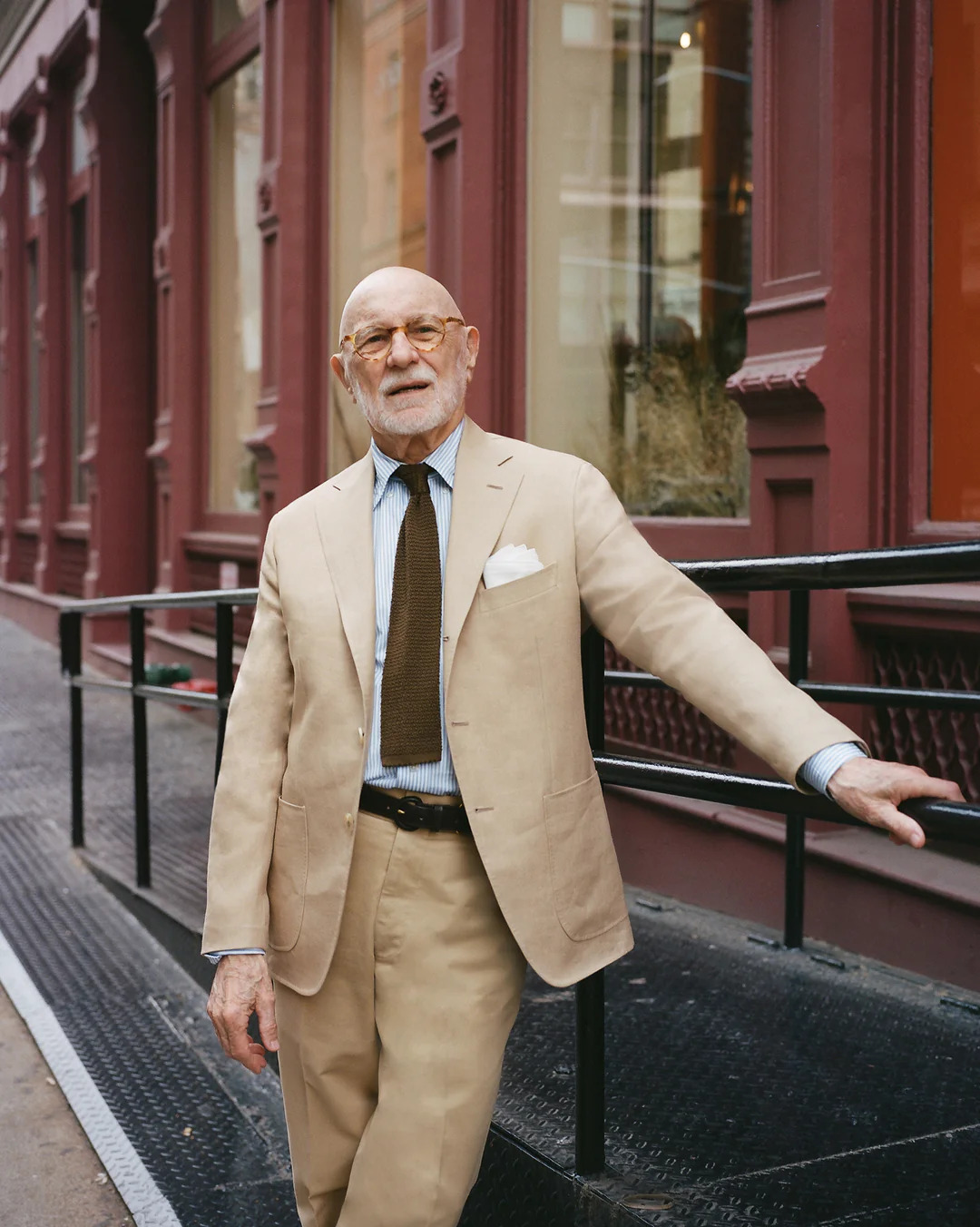
Having corresponded with Bruce Boyer for over ten years, I can tell you two things. First, he’s immensely kind, supportive, and gracious, despite my taking forever to reply to emails. Second, he often ends his emails by mentioning a book or an album he’s been enjoying. I’ve bought countless things based on his off-hand recommendations, such as Richard Sennett’s The Craftsman and Robert Graves’ The Long Week-End. I was also pleasantly surprised to learn some years ago that Bruce and I share the same taste in music, namely blues and jazz.
So, it was a pleasure to see that my favorite menswear writer recently penned something of a memoir about having seen some of the most influential artists during the 20th century. His new book, Riffs, is a collection of short essays reflecting on blues, jazz, and early rock and roll. There are some surprising bits of history, such as how Merck, the pharmaceutical company, once co-produced a blues album with RCA to promote an antidepressant drug. There are also some personal reflections, such as his chapter about seeing Nina Simone perform at a small Philadelphia venue, and, as you can expect, a bit about men’s style (such as insights into Frank Sinatra’s wardrobe).
When Riffs first debuted last year, I wanted to create a Spotify playlist to accompany an interview with Bruce. Fortune favors procrastinators, as Ivy Style contributor Eric Twardzik saved me the trouble and made a three-hour playlist on Spotify. It’s a wonderful way to enjoy some of Bruce’s favorite music (much like his style advice, his music recommendations are a step above the rest). I recently interviewed Bruce about his new project. Although the book isn’t focused on menswear, I think most readers will find that there’s a continuous thread running from clothing to other parts of culture, which we can call style.
You’ve spent the last 40+ years writing about men’s style, and while you approach the topic from a cultural perspective, the focus is typically on clothing. What made you want to write a book about music?
It’s true that, except for a little fiction and poetry, all of my writing has been about men’s style. However, during the COVID lockdowns, I found I had some time to try and stretch myself. I’d also been feeling for some time that I had written myself out about clothes, and I was growing stale and repetitive. At first, I thought I’d write some short stories, but I found myself listening to a lot of music. So, I started writing these little essays about what I was listening to and then circulated them among friends. After about six months, I noticed these essays were accumulating, and I wondered if I could make a book out of them.
While thinking about how I could turn this into a book, I reflected on what I wanted to accomplish. I realized that I could use my “memory history” to honor the musicians who have meant so much to me and perhaps introduce younger listeners to music they may find worthwhile. I chose to focus the essays on the musicians I listened to during that lockdown, but I could have easily chosen dozens of others who have influenced my youth.
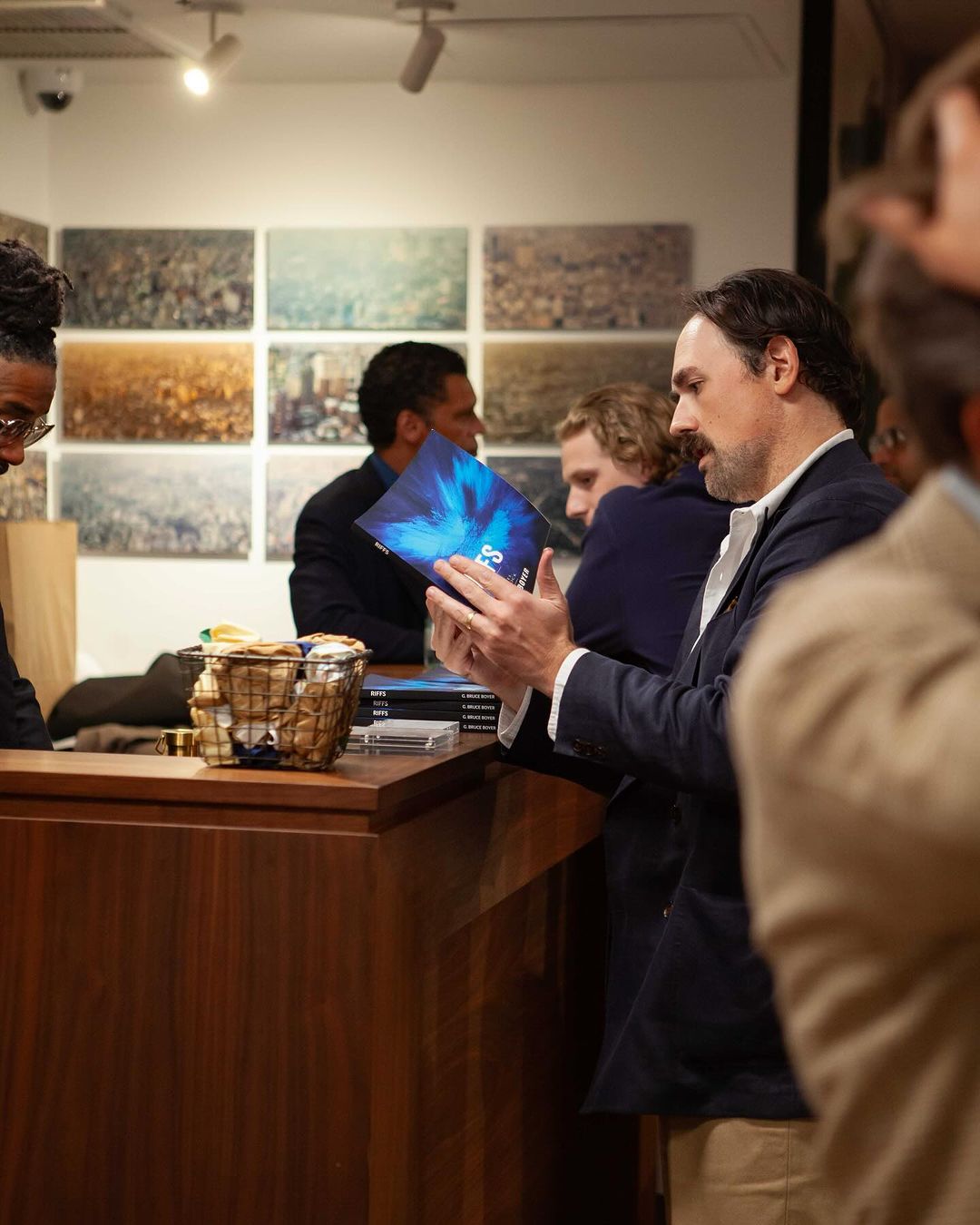
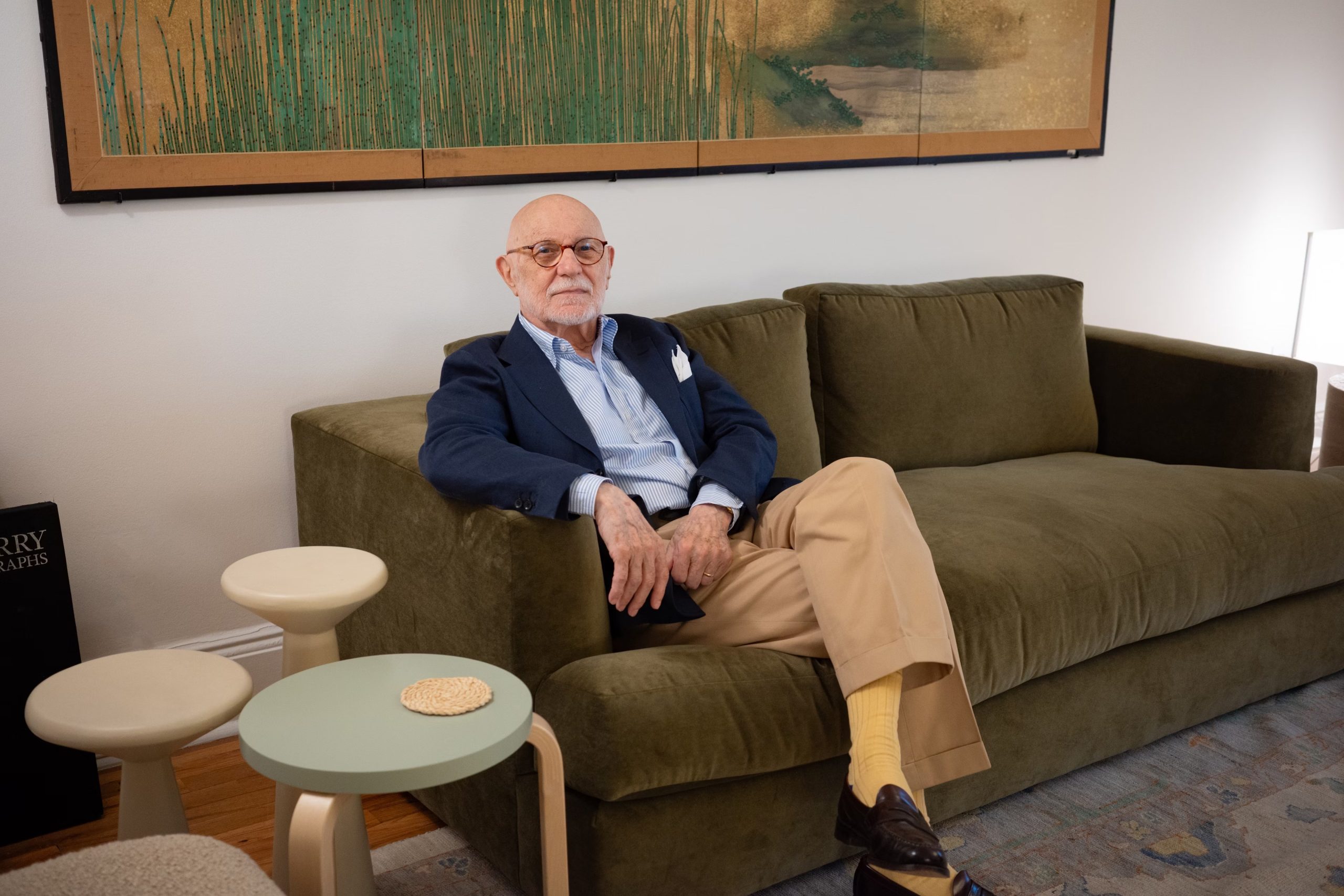
I should add that music isn’t so removed from clothing and style. Many jazz and rock musicians were very stylish figures who were acutely aware of their image. Many of them even left their mark on fashion. In many cases, it’s impossible to separate the image from the talent.
It’s clear that your interest in music and style developed in tandem. I greatly enjoyed the stories of you going to dance clubs as a youth, as I also developed an interest in clothing in those spaces. Did your style evolve as you discovered different genres of music?
That’s right, the dancing and the clothes came together for me at the same time. I developed an interest in music early on, and by the time I was 15 years old, I had already tried the black leather motorcycle jackets and zoot suits that were prevalent in my blue-collar neighborhood. That look was more than a stylistic preference; it had an assertiveness that reflected an ideological position of the working class. Of course, the tough-guy clothes didn’t really work for a skinny little kid like me, so I switched to the Ivy look when I transferred to a high school outside of my neighborhood. That school had students from all over the city, and I noticed that the more affluent ones wore Ivy clothes, which I was aware was a symbol of discreet wealth in the form of unaffected understatement.
I remember when I was 17, I persuaded my mother to buy me an olive tweed three-piece suit for our junior prom, and then I persuaded several of the guys in my group to buy the same suit so that we could go to prom in these “uniforms.” I hope you don’t mind if I brag a bit, but I was a very good dancer and enjoyed a wide range of music—from Latin rhythms (Cha Cha, Mambo, Merengue) to jitterbug, and of course slow dances because you got to hold the girl in your arms. There are few times in my life where I’ve been happier than slow dancing in a smoky nightclub to a small band with a talented tenor sax player. It was the sort of thing that put the steam in my gabardine, as we used to say. I loved the club life, and in those halcyon days, people dressed to go to the clubs. One summer, I visited NYC and returned with a navy blue poplin suit from Brooks Brothers, which I believe was the first in our town. And I can tell you it was a big hit with several of the ladies.
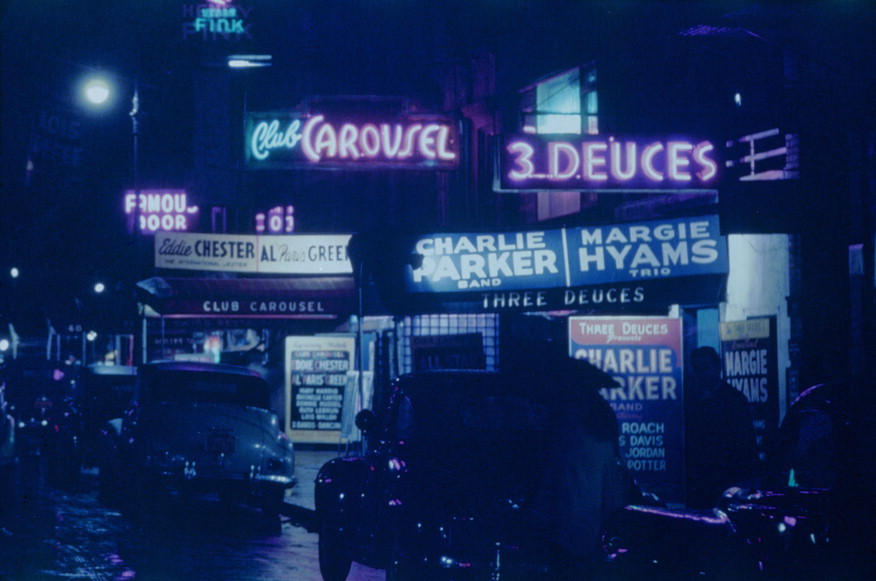
Since there were three good colleges and a highly respected university within a five-mile radius of my home, Ivy clothes were a big part of the sartorial geography. There were three fine Ivy men’s stores for natural-shouldered tailoring, Shetland crew necks, repp striped ties, and all the other accessories. Later, they became video stores and pizza takeouts, but during my day, they were a tartan-carpeted, wood-paneled heaven to a freshman jazz aficionado majoring in English. I fear the tide is against me, as I continue to cling to that era with minimal change. I prefer small concerts to stadium venues, softly tailored clothes to overt costumes, and Koko Taylor to Taylor Swift. It’s my own little world now, but I’m content and comfortable here.
You noted in the book that many people see the mid-century as a period of “corporate consumerism, standardization, and the homogeneity of pop culture.” Yet, some of the best music—and fashion, I would add—came out of this period. We don’t typically think of corporatization and commercialization as being beneficial for cultural creativity. Why do you think the mid-century was excellent for music?
Some years ago I wrote a little book called Rebel Style: Cinematic Heroes of the 50s, in which I tried to briefly describe youth culture in the ten-year period after World War II. This may be oversimplifying, but I believe it’s true that American style, encompassing both music and clothing, diverged into two distinct directions following the war. People turned either to one version or another of Eastern WASP Establishment (i.e., upper-class Ivy college) or to underclass prole gear. In other words, there was an Ivy-jazz-intellectual nexus and a rebel-rock-blue-collar one. There were variations of this—I still would like to write a book about mid-century American style discussing the variations—but so many young, middle-class men who served in the military were able to receive a college education because of the G.I. Bill (officially known as the Serviceman’s Readjustment Act). Such people took up Establishment mores and became a version of The Man in the Grey Flannel Suit. However, many underclass White, Black, and Hispanic youths living in the inner-city were deprived of these opportunities. They created their own culture, which often revolved around music, zoot suits, and motorcycle gear. People who have studied these groups will tell you that the stylistic manifestations of what we may call the urban hipster, the rebels without a cause, and the so-called Beats were defiantly wearing their clothes as an exaggerated armor, both as resistance and denial of corporate consumer culture.
In reality, it is the underclass that often shapes culture. I’m reminded of the old saying that if you walk the same path as everyone else, you only see what everyone sees. Being out of the mainstream means having to construct your own culture. I agree with Leroy Jones in his study Blues People that Bessie Smith shouldn’t have had to sing the Blues. The reality is that she did, and the Blues is, in my humble estimation, the greatest gift America has ever given the world. Really.
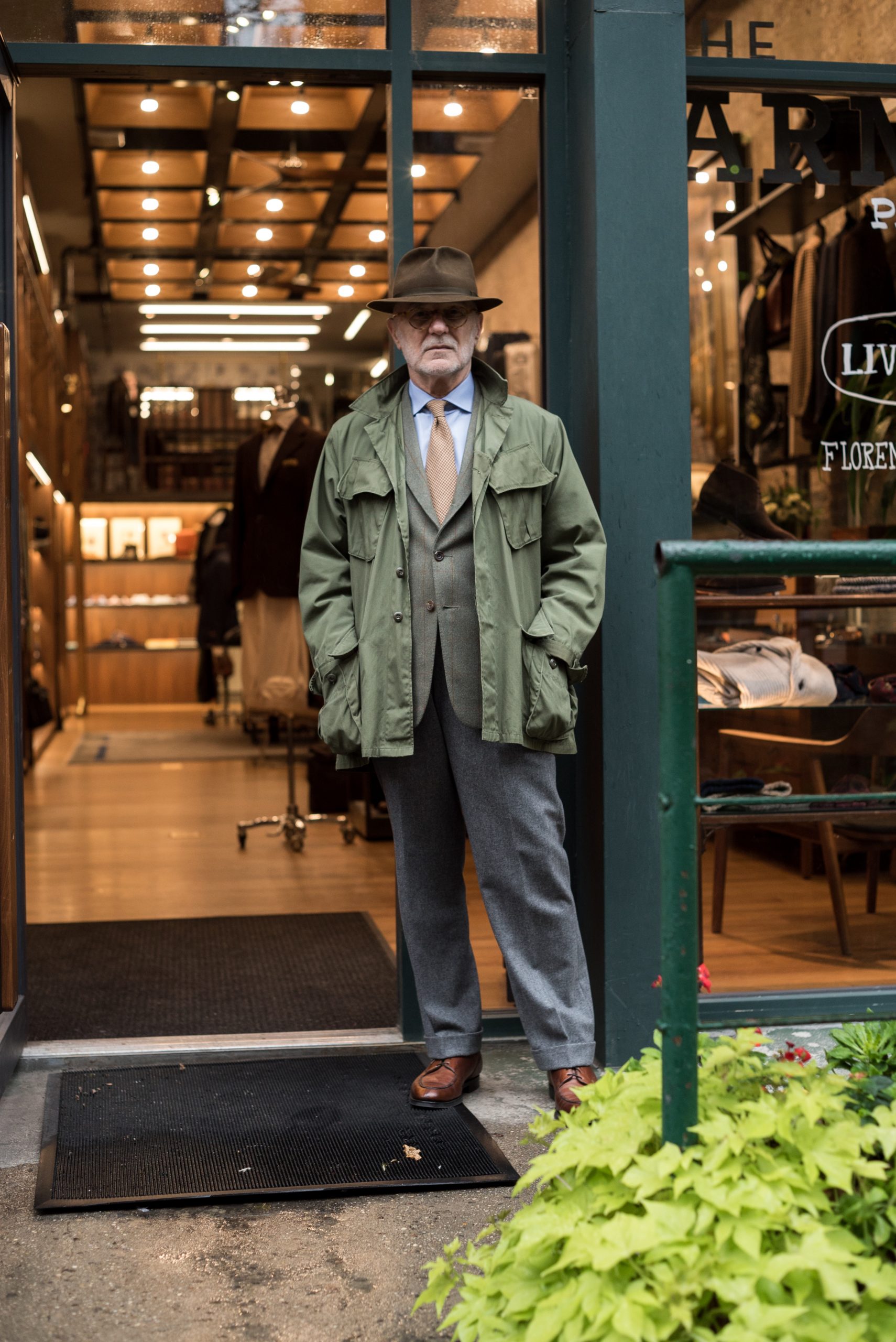
But corporate consumerism has a way of surviving by co-opting even antithetical elements in society, and by the end of the 1960s, some young people were becoming aware that the clothes and the music had become tamed and sterilized. Today, we can’t escape the patina of commercialism. There’s a difference between Ivy and Preppy, as well as between the shitkicker engineer boots bought in Army-Navy stores and the purposefully distressed $1,200 Ralph Lauren version. The alienation and the aura of apartness are no longer there. Today’s rebel clothing may have the physical form, but it lacks the necessary “attitude.” In short, the icon-making power is gone.
In the book, there are instances where you establish a connection between the shifts in music and fashion, such as the transformation of jazz from a dancing crowd to a listening one (or the shift from swing to bop). As you put it, this transition coincided with the change from zoot suits to sack suits. I hadn’t thought about that relationship before. By the time rock-and-roll overtook jazz sales in the 1970s, it appeared that suits were already in decline. Do you think this is essentially a story about how jazz became too closely tied to the Establishment? Was it too intellectualized and not easy enough to dance to?
Jazz aficionados often tell the story of Black musicians becoming disenchanted with White bands ripping off their orchestrations. Supposedly, the great sax player Charlie Parker and a few of his friends decided to develop a new form of jazz and go where the White boys couldn’t easily follow. I don’t know whether this is true or not; I’m always dubious of easy answers to tough questions. However, we know that jazz transitioned from music suitable for dancing to music for listening, transforming from powerful beats and rhythms to intricate forms and sounds valued for their more introspective approaches. This new jazz was accepted by small numbers of people on both ends of the social spectrum. And the new jazz musicians who played to college audiences began appreciating the Ivy style they saw on campuses and took it home with them. That influenced the urban hipster to adopt a uniform called “Jivey Ivy,” which was an exaggeration of the campus look. On college campuses nationwide, parties featured rock music, while concerts featured jazz. Jazz was evolving into America’s classical music, a genre that people listened to attentively, studied, and pursued courses in. Perhaps because of its studious nature, jazz didn’t reach the popularity of rock, but its audience and the suit dwindled after the 1960s.
Did anything happen when Black jazz musicians started dressing Ivy? Did they help spread the style to new audiences at all?
Definitely. Black musicians got more and more gigs on college campuses after the war. The economics were such that the big bands were much more expensive than smaller trios, quartets, or sextets, so colleges hired the smaller groups. At the same time, jazz was turning towards smaller groups for expression, as big band swing music started to feel old-fashioned. By the mid-1950s, when these musicians were adopting the Ivy look, the handwriting was on the wall. If memory serves, Charlie Davidson of the Andover Shop dressed Miles Davis in a natural-shouldered seersucker suit to play at the 1955 Newport Jazz Festival. After that, every other jazz musician in the country went home and burned his zoot suits, if he hadn’t already done so. So the musicians spread the word to the inner-city youth that the Ivy Look was cool. That’s how it happened.
I’d love to have you react to a few music videos. Let’s start with blues because, as you wrote, that’s really the foundation for so much American music. Of all the blues musicians in your book, my favorite is Reverend Gary Davis. When I was young, there was a time when I was really into simple, acoustic folk and blues music because it felt very “of the people.” I still have a Charley Patton pin on an old Lee trucker jacket because I consider him to be the father of a lot of American music. In your book, you have an anecdote about how Merck, the drug company, once produced a blues album with RCA to promote an antidepressant drug. Why does this horribly depressive music feel so healing? And what do you think is particularly powerful about Davis’ music?
Rev. Gary Davis was one of my later discoveries; I bought my first album by him when I was in my 20s. The first time I heard “Death Don’t Have No Mercy,” my heart stopped cold. He’s a consummate guitar player who has the power to make his voice as deterministically harsh or as melodically delicate as he wants. There’s no gimmick here—no “show business” elements to pad out the performance. He sits in a chair and lets it rip with his guitar and microphone. Which means you immediately get that sense of authenticity, which captivates you. This is the foundation of blues and religious music. As Chris Strachwitz, founder of Arhoolie Records, is fond of saying, this ain’t no mouse music. If you want to confront the emotional truth of living, the Rev will bring it.
Albert Murray, one of the finest jazz commentators, argues that the blues help us cope with the blues. Blues isn’t about wallowing; it’s about helping us overcome sorrow and preserve. The blues tell us that tragedy is the way of the world, but we can heal with compassion and empathy. That’s why I titled that section in my book “The Camaraderie of Sorrow” and why Leroy Jones called his wonderful book Blues People. We can’t escape trouble, but we can gather around the campfire, share our stories, and feel a little less afraid and insecure. The blues skillfully transforms these overwhelming emotions into a comprehensible and relatable form, providing us with comfort.
You call Big Joe Turner your favorite blues singer. This is where blues starts to really feel like it’s forming the foundation of rock and roll. I would link “Shake Rattle and Roll,” but I think this clip of him singing “Honey Hush” is visually more compelling. Guys like him and Carl Perkins never really achieved Elvis’s success. Why do you think that is? And what do you like about Turner?
The answer to your question about the success of Elvis vs. Perkins and Turner—both of whom, and I know this is heresy in some circles, were superior musicians—is that Perkins simply didn’t have Elvis’ charisma. He wasn’t as handsome; he didn’t have the personal style; he just didn’t have that indefinable star quality. Turner, of course, was Black, and very few Black musicians were able to cross over into stardom for a White audience, regardless of how much talent they had. But both had careers that lasted much longer than Presley’s, so you could say that success is relative.
I first heard “Shake, Rattle, and Roll” when I was 13 years old. By that time, Joe Turner had already had a ~30-year career as a nightclub singer. He had recently signed a recording contract with Atlantic Records, and this was the label’s big attempt to cash in on the lucrative youth market by making Turner a rock ‘n roll star. So they put a rock band and chorus behind him. But Big Joe didn’t care; he kept singing the way he’d always done, with the force and ebullience that nature bestowed on him. People often refer to him as the “Boss of the Blues” due to his powerful delivery, yet I believe it was his joyful nature that drew audiences in. He makes us aware that sorrow will not conquer him. He will not surrender to suffering but instead go on laughing, loving, drinking, dancing, and fornicating ‘til they nail his coffin down.
I remember attending a house party in 1957, when I was about 16 years old. Couples were dancing to “Wee Baby Blues,” my favorite Turner song, with the rugs rolled back in the dining room and the lights turned down low. I’ve never forgotten that scene; it seemed at the time, and still does today, to have been life itself. A hero is someone who lifts us up, and Big Joe Turner lifts me as high as anyone could.
I admit I felt a bit of jealous envy when I read that you saw Nina Simone perform at Pep’s in South Philly. To me, she’s the total embodiment of American music, as she blended folk, jazz, blues, and even show tunes. But more than that, she was the musical voice of the Civil Rights movement. Later in life, she told an interviewer at Jet Magazine that the music industry boycotted her because of “Mississippi Goddam.”
In recent months, bands like Green Day have garnered backlash for taking a political stand. And during the Bush years, there was a boycott of the Dixie Chicks. People want their entertainers to stay away from politics, at least when they disagree with their views. During the time you watched Simone develop as an artist, did you see any similar controversy?
I saw Nina Simone near the beginning of her career. She had been playing clubs in Philadelphia and Atlantic City for a few years before she got a recording contract. Her version of “I Loves You, Porgy,” from the Gershwin musical, was the first song to make a splash with lovers of jazz and R&B. That was the first time I heard her, around 1957. The voice was so plaintive, the piano-playing so accomplished and full of soul, we were struck dumb. Simone had somehow combined her expertise of classical music with a blues feeling to produce something unique, and as you note, she continued to blend her classical studies with blues, folk, and show tunes. She was without question the hippest thing out there.
I think it was sometime in the late 1960s, possibly earlier, when I noticed she was no longer getting TV appearances and her records weren’t being played as much on the radio. And we knew why. She started to take a very insistent stand against segregation. She is another hero for me—someone who knew that she would jeopardize her growing career but did what she knew to be right anyway. She was a tremendous talent, and she used her work for the cause. She threw herself into that struggle and willingly paid the price, and I don’t think there was another example quite so striking.
I found your chapter on Frank Sinatra really fascinating, particularly in how you described Sinatra’s style changing over time. He went from wearing zoot-suit-esque tailoring and floppy bow ties indicative of working-class bobby-soxers to a sleeker, more urbane look of his Rat Pack era. Apparently, he even wore a bit of Ivy Style clothing during the 1960s. As someone born after this period, I hadn’t thought about how he was cutting against middle-class sensibilities at the time. To borrow Karen McNally’s phrase, which you quote in the book, Sinatra was the “antidote to gray flannel.” Could you elaborate on how these clothes reflected socio-economic class?
I should start by saying that Sinatra was always interested in his appearance. Even as a child, his mother dressed him very well, and as a young man in Hoboken, people nicknamed him “Slacksey” because of his extensive wardrobe. The style at the time—slightly before WWII and slightly after—among urban youths living in working-class, ethnic enclaves was some variation of the zoot suit, which was an oversized, flashy version of traditional tailoring. Suffice to say, it was underclass armor and a way to express alienation from middle-class proprieties. In a segregated Italian neighborhood, a young Sinatra could have been expected to take up this sartorial approach—and he did.
This look served Sinatra well when he ventured into the world of big band music in Manhattan, as oversized suits were part of the aesthetic of bandstands. But when his ambition took him to Hollywood, a lot of his tailoring lost its volume. Film stars favored the drape cut, which was only slightly oversized to accentuate the wearer’s masculinity but still telegraphed a certain kind of middle-class sensibility. Sinatra’s sleek era was then just on the horizon. By the time he started performing in Las Vegas, he and his Rat Pack were responsible for popularizing the “Continental” lines of their high-luster mohair and Dupioni silk suits. This style was also favored by both the owners and habitues of nightclubs, as well as guys who took their dress advice from Playboy magazine. The term was cool.
For a brief period in the late 1960s, Sinatra flirted with Ivy style clothing from J. Press. Richard Press, grandson of the company’s founder, has written marvelously about this. You can see this look in Sinatra’s 1965 TV special, “A Man and His Music.” Was Sinatra looking to telegraph a certain kind of mature respectability? Did he adopt it because Ivy was a popular American look? Was he influenced by jazz musicians who had also taken up the style? Yes to all of the preceding. Sinatra enjoyed clothes, and he picked up on the sartorial zeitgeist. In his final years, he dressed in Old Hollywood Casual, still preferring his mohair tuxedos to show a bit of white flash from his shirt cuffs. He went from one look to another—the money was the difference between them.
Finally, I want to ask a more philosophical question. You’ve spent most of your life writing about style, particularly as it relates to men’s clothing, but almost always through the lens of culture. This new book is just about music. Do you believe that exploring different perspectives on style can provide valuable insights into clothing? In other words, can one learn how to dress better by paying more attention to things like music, art, and film?
Well, I’m relying here more on gut instinct than analysis. I think my contribution, if any, has been to help people see clothes as part of the greater zeitgeist rather than things in and of themselves. I’ve always been a philosophical integrationist, finding it difficult to talk about anything as a separate entity. In my own life, I’ve found that influences come in armies, not as individual soldiers. My love of music, dance, and clothes all came to me at the same time. I can’t separate how they’ve contributed to my life.
For me, style is the common thread. Some guys have style, while others just spend a lot of money. It’s so interesting that two guys can wear the same thing—let’s say jeans, a simple white shirt, and sandals—and yet look totally different. One can look so right and the other so wrong; one so cool and the other so uninformed. A person’s style permeates his life, both describing him and informing us. Every aspect of it seems to tell us who he is, from the way he gestures to the way he folds a pocket handkerchief. We could even say that, on some level, stylistic preferences are ideological and moral positions.
If I may add, I’ve never believed that there is a right or wrong way to dress. Apart from giving some thought to the nature of the occasion, I’m more of a mind to agree with Thelonious Monk: “There are no wrong notes, only better choices.”
Many thanks to Bruce for taking the time to chat with me. Readers can buy his book on Amazon or get the digital edition from Alexandria Labs. There are also a few autographed copies available right now at St. Johns in Ridgefield, Connecticut. Finally, be sure to check out the Spotify playlist that Eric kindly pulled together. The songs are nicely organized according to their appearance in Riffs, making it a helpful accompaniment to the book.
The post Riffing With Bruce Boyer appeared first on Put This On.
I Think This Dunkin' Designer Collaboration Is Very Fun
SarahWow
Kana, 23

Kana, 23
“I’m wearing a vintage scarf as a top, both belts from thrift store in Japan, 80s skirt, and shoes from Charles & Keith. My style is always inspired by Japanese street fashion.”
May 25, 2024 ∙ Chinatown
Who Goes Nazi?
Sarahouch
In 1934, Dorothy Thompson became the first American journalist to be expelled from Nazi Germany for writing critically & unfavorably about the regime and its leader, Adolf Hitler:
He is formless, almost faceless, a man whose countenance is a caricature, a man whose framework seems cartilaginous, without bones. He is inconsequent and voluble, ill-poised, insecure. He is the very prototype of the Little Man.
Back in America as one of the most famous journalists and women of her time, she spent the rest of the 30s and early 40s trying to warn the nation of fascism both here and abroad. In 1941, she wrote a piece for Harper’s Magazine called Who Goes Nazi?, in which she muses about which guests at a party would become Nazis.
The saturnine man over there talking with a lovely French emigree is already a Nazi. Mr. C is a brilliant and embittered intellectual. He was a poor white-trash Southern boy, a scholarship student at two universities where he took all the scholastic honors but was never invited to join a fraternity. His brilliant gifts won for him successively government positions, partnership in a prominent law firm, and eventually a highly paid job as a Wall Street adviser. He has always moved among important people and always been socially on the periphery. His colleagues have admired his brains and exploited them, but they have seldom invited him — or his wife — to dinner.
He is a snob, loathing his own snobbery. He despises the men about him — he despises, for instance, Mr. B — because he knows that what he has had to achieve by relentless work men like B have won by knowing the right people. But his contempt is inextricably mingled with envy. Even more than he hates the class into which he has insecurely risen, does he hate the people from whom he came. He hates his mother and his father for being his parents. He loathes everything that reminds him of his origins and his humiliations. He is bitterly anti-Semitic because the social insecurity of the Jews reminds him of his own psychological insecurity.
Pity he has utterly erased from his nature, and joy he has never known. He has an ambition, bitter and burning. It is to rise to such an eminence that no one can ever again humiliate him. Not to rule but to be the secret ruler, pulling the strings of puppets created by his brains. Already some of them are talking his language — though they have never met him.
There he sits: he talks awkwardly rather than glibly; he is courteous. He commands a distant and cold respect. But he is a very dangerous man. Were he primitive and brutal he would be a criminal — a murderer. But he is subtle and cruel. He would rise high in a Nazi regime. It would need men just like him — intellectual and ruthless. But Mr. C is not a born Nazi. He is the product of a democracy hypocritically preaching social equality and practicing a carelessly brutal snobbery. He is a sensitive, gifted man who has been humiliated into nihilism. He would laugh to see heads roll.
Tags: Adolf Hitler · Dorothy Thompson · Nazis · politics
Saturday Morning Breakfast Cereal - Cortex

Click here to go see the bonus panel!
Hovertext:
This is why artists and mathematicians were ahead of the curve on madness. You are all us now.
Today's News:
There's a Reason We All Want to Smell Like Tomatoes This Summer
Sarahsign me the fuck up
Googly-eyed Green Line trolleys take to the tracks
SarahPlease click through to see this magnificent picture
A couple of months ago, some T riders asked the T to slap some googly eyes on the front of Green Line trolleys. Today, the T gave the people what they want: Googly eyes on Green Line trolleys - if not all of them, at least five, now roaming around the Green Line, such as this crazy-eyed trolley making the crazy turn at crazy Packards Corner in Allston.
Arielle Lok, who helped organize a pro-googly march in April, posted correspondence and a photo she got from a T spokesman today, who said the T slapped the shaky eyes on as part of a campaign to "bring moments of joy to our riders' daily commutes:"
We're constantly seeking creative ways to improved riders' experiences, from in-station musical performances and children's voice-over announcements to our "Share the Love" campaign.
Fornace Brioni’s Grounded Exhibition Is a Tour of Terracotta
Sarahwow I love so many tiles
Equal parts surface decoration and protective skin, the art of tile-making dates back as far as civilization itself, distilled through nearly every culture since man’s early twilight with many nations lavished upon its development. Fornace Brioni adds to the annals of earthenware with Grounded, an exhibition showcasing their new wall and floor coverings, designed by Snøhetta and Cristina Celestino, in a terracotta tour arranged by Cristina Celestino Studio. The museum-like approach articulates a poignant material narrative through a series of vignettes grounded in the feeling of home by a juxtaposition of solid-void, absolute geometries, and surfaces awash in warmth.
Forged from Fornace Brioni’s subtle alchemy of water, earth, and fire – the cotto cladding comes from the finest clays slowly accumulated by sedimentation on the Po River’s floodplain. Though the three collections comprising five products debuted during Milan Design Week 2024, the contemporary artisan tiles feel more like decadent artifacts plucked from the ruins of Pompeii and restored to their former splendor. The striking balance between hand-craft, technical precision, and unmistakable Italian aesthetics imbues them with a sense of future nostalgia.
Void Collection designed by Snøhetta
Guided by the tenets of Fornace Brioni, the esteemed global transdisciplinary practice Snøhetta redefines the brand’s boundaries for hand-pressed terracotta with a minimalist design that embraces material reduction, imperfection, and soft form. Rich texture tracks the passage of time in dialogue between light and shadow across each surface. The bilateral symmetry offers a myriad of geometric compositions at any designer’s discretion and is offered in an optional glazing for smooth finish when desired. The deep, sumptuous curves and carvings add additional dimension while maintaining the strength of a structural element.
Araldica Collection designed by Cristina Celestino \\\ Products: Corte + Ducato
Derived from Euclidean geometry, artistic director and designer Cristina Celestino creates a study of points and lines adhering to the precision of congruence and symmetry for the Araldica collection. That rigidness is tempered by chromatic play in the tessellations that unfurl across each surface as satisfying joinery and material contrast create additional dimension. Available in Ducato and Corte, these simplified patterns and variegated terracotta tiles contemporize Cosmati work – a type of mosaic technique practiced by 12th and 13th century Roman architects – for harmonic synthesis and incredible illusion.
Fluviale Collection designed by Cristina Celestino \\\ Products: Alveo, Plain, + Golena
Celestino takes a different approach for Fluviale, with its offerings Alveo, Plain, and Golena. Like serif typefaces capturing the physicality of carving glyphs into stone, so too does this collection echo human motion – here embodying brushstrokes. Striking a balance between similarity and subtle difference, each tile becomes a gesture for a greater body of movement. The variations take inspiration from the plant world beneath rippling waters, flora along riverbanks, and earth whipped into shape by the tides. Embrace entropy or intervene for compositions that range from organic to accurate.
To learn more about their heritage of tile, visit fornacebrioni.it.
Photography by Mattia Balsamini and Piercarlo Quecchia as noted.
Iisakki
“I’m wearinge a 2000s CDG homme plus jacket and a thrifted skirt with some big pants underneath from Berlin based brand UY Studio. Currently like mixing and matching different layers which has been made difficult by the recent heatwave. It’s hard out here.”
29 May 2024, Laivakatu
Jonathan Anderson Already Made a Bag Out of the Viral Loewe Tomato
Sarahthis is stupid and i love it
Squaring the Reality of What We See
Gareth Fearn writing for the London Review of Books about the student protests on US campuses: Liberalism without Accountability.
This is a toxic combination: universities reliant on investment portfolios in a system where mega-profits are made by companies that threaten and destroy human life, influenced by an increasingly radicalised class of billionaires, teaching students whose degrees won’t earn them enough to pay off their loans, managed by supine administrators threatened by (or willingly collaborating with) a reactionary right, who have decided that young people’s minds are being turned against capitalism not by their own lived experience of austerity and racialised police violence but by ‘woke Marxist professors’. This situation has now met with a live-streamed genocide which is supported, and brazenly lied about, by political leaders and commentators who claim to stand for truth and justice. Students, like much of the public, cannot square the reality of what they see with the world as constructed by politicians and the media.
Under such circumstances, pitching tents, raising placards and demanding divestment are really quite mild-mannered responses. That they have been met, in many US universities, with militarised policing reflects the fragility of liberalism — in the face of the growing hegemony of the conservative right as well as its own inability to offer a future even to Ivy League college students, let alone the less privileged.
Tags: education · Gareth Fearn · policing · politics · USA
Gen X and millennials who have been posting selfies on social media...
SarahAAAAAHHHHHHH
F5: Susan Maddux Shares Her Vintage Textiles, Art Collection + More
Known for the origami-inspired technique she uses to transform paintings into wall sculptures, Los Angeles-based artist Susan Maddux’s creativity is incredible to experience. Each artwork, ranging in size from 12-inches all the way up to seven feet tall and protruding 2-6 inches from the wall, is constructed from separate acrylic on canvas paintings that are individually folded before being added to the larger piece. As Maddux explains it, the canvas is painted, folded, and unfolded many times as she experiments with proportion and patterning. The final forms, repeating mirrored images, bring to mind garments, perhaps a kimono or a cape, and acquire an anthropomorphic quality that transforms spaces.
Maddux is a 4th generation Hapa-Japanese woman, born and raised in Hawaii with a few stints living on the mainland growing up. Her work reflects her personal experiences, recalling the land’s lush landscape and brilliant colors with each piece of canvas. The work also connects Maddux to generations of women who came before her through the rituals of smoothing, folding, shaking out cloth, repetition, accumulation, veneration, and reflection.
After receiving a fine art degree in painting from the San Francisco Art Institute, Maddux’s career began as a surface designer in New York. The profession, and what she learned through it gave her a different perspective on painting. But every time she would consider taking it on full-time, someone would say it was impossible to support herself that way and it couldn’t, or shouldn’t, be done. So, she protected her artistic talents and kept them for herself.
In 2012, Maddux made the move to Los Angeles and began exploring how to plug away at her paintings as material, developing the folding collage technique in the process. In 2019, after some life struggles, she went professional as an artist.
“Painting had always been how I came back to myself, what helped me remember who I was, and how I got grounded,” Maddux says. “I had the opportunity to do a large installation at the LA Design Festival in 2019, and I took that chance and gave it my all. I did 12 pieces, and things started really taking off. My work was discovered by the design community, and I’ve been able to work within both art and design since then, which has been fantastic.”
Maddux took a minute to recall traveling to visit her grandparents for the first time in San Antonio, Texas, when she was 10 years old. Never having gone anywhere before, their 15-foot carved antique wooden front door from Italy made an impression, as did the rest of the house. “It was built in a Mediterranean style with open walkways and bougainvillea surrounding a tiled pool that sparkled in the sunshine,” she recalls. “The house was filled with art they had collected all over the world. It was a total revelation for me to see that you could intentionally create an environment of beauty and harmony like that.”
If you’d like to catch Maddux’s work in person, her next solo show, Wet Drapery, opens April 13th at the Not There Gallery in Chinatown, Los Angeles. But today she’s joining us for Friday Five!
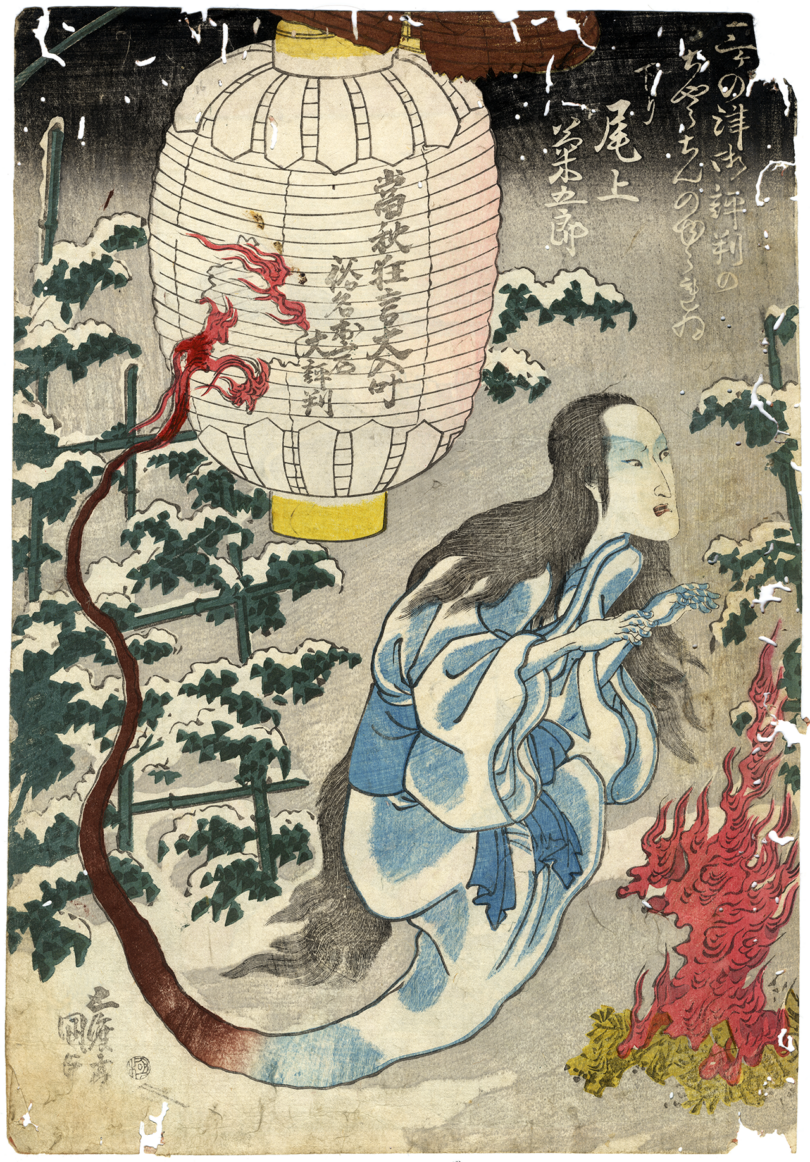
Painting by Utagawa Kunisada
1. Yokai
My fascination with the spirit world and depictions of yokai, Japanese ghosts and demons, began when I was very young. Growing up in Hawaii, I was always aware of the supernatural world, and hearing ghost stories from my Japanese relatives fueled my imagination. Paintings of yokai and the grotesque seem to open up space for the imagination to run wild and delightful depictions of demons that run from terrifying to absurd are absolutely captivating.

Art by Giovanni Garcia-Fenech
2. My Art Collection
I started my art collection by trading art with friends when I was in school at the San Francisco Art Institute. I’ve known so many incredible artists over the years, and sometimes I’ve been lucky enough to collect their work. I like to buy something every year as a gift to myself. I have a couple of large paintings and photographs, and many smaller pieces. I love to be surrounded by pieces that remind me of inspiring and talented friends and how art shapes the world we inhabit and makes life so much more interesting.
3. Vases
When I travel, I love to buy ceramics. Something made by hand, with materials from a particular area is such a great way to connect with and remember the creative energy of a place. Some of my favorite vases are made by friends as well, we’re lucky to have such a rich ceramic tradition here in Los Angeles. When I was little, a family friend gave me a collection of tiny vases because I loved small things. Putting a single flower in a little vase brings me right back to that fascination. I’m always foraging on my walks in the hills, so I’ve collected quite a few large heavy ceramic vases that can hold the eucalyptus branches, overgrown mustard stalks, seed pods, and palm fronds I find while I’m out.
4. Symmetry
I became very aware of the relationship between elements when I started exploring print and pattern design. Symmetry is a very important organizing principle that creates an expectation that is really interesting to play with. In my work, I refer to symmetry as it is found in nature – an imperfect mirror image. That little bit of difference creates tension and curiosity and offers an invitation to look closer. We intuitively sense something humanizing about imperfect symmetry. It wasn’t made by a machine, but rather speaks of the beauty of a flower or a face we love in its unique construction.
5. Vintage Textiles
I grew up thrifting in Hawaii. We would find a lot of 60s and 70s pieces and I had an incredible collection of psychedelic shifts and house dresses – the kind with the zipper up the front that grandma used to wear – that I wore to high school. This did not make me very popular, but I did become interested in textiles and patterning. I always shop by both feel and look, and I loved going through the racks looking for treasure: vintage aloha wear patterns, prints on silk, or barkcloth. I’ve always collected vintage, and over time I’ve used many pieces from my collection in my own work, as inspiration for patterns in paintings and even as subject matter.
Work by Susan Maddux:
The most recent development in my work has been incorporating painted portals or frames that are specific to each piece and painted directly on the wall.
